If you ever wondered why the progress in cancer research is so slow despite billions being invested into basic research – Sholto David will show you why.
Forget Asian papermills. Forget Sicilian universities. They are just emulating what the most prestigious US research institutions teach. And you can’t get any more prestigious than Harvard and its Dana Farber Cancer Institute.
Memorial Sloan Kettering Paper Mill
“Why do successful and apparently intelligent surgeons feel the need to play pretend at biology research? Has Sam S. Yoon ever performed an invasion or migration assay? […] if this is how he “supervises” his research does anyone trust his supervision of surgery?” – Sholto David
Well, the level of data forgery is pathetically amateurish and excessive. So much that we could only include a fraction of it into this article, you will have to search Ken Anderson, Bill Hahn and other protagonists on PubPeer to see how bad it all really is. In fact, it is worse, because we only see the tiny tip of the fraud iceberg – image data duplications, the last resort of a failed scientist after every other trick failed to provide the desired result. Billions of dollars were burned for this cancerous trash science, but it made many academic careers, some got very rich, and entire dynasties established themselves at Dana Farber.
None of Dana Farber researchers mentioned in this article replied when asked to comment on their PubPeer records.

Dana-Farberications at Harvard University
By Sholto David
As the whole world furiously argues over whether the president of Harvard did or didn’t use some quotation marks in the right place, scientists at the affiliated Dana-Farber Cancer Institute (DFCI) must breathe a sigh of relief, no one has bothered to critically read their research in years! Far worse skeletons than plagiarism lurk in the archives…
Laurie H. Glimcher
Starting with Laurie H. Glimcher, who is the President and CEO of the DFCI. No doubt Laurie built her career on papers like this one, in Nature Immunology (2003), which includes some impressive contributions to art, but perhaps not to science.
Neal N. Iwakoshi, Ann-Hwee Lee, Prasanth Vallabhajosyula, Kevin L. Otipoby, Klaus Rajewsky, Laurie H. Glimcher Plasma cell differentiation and the unfolded protein response intersect at the transcription factor XBP-1 Nature Immunology (2003) doi: 10.1038/ni907
Maybe the coauthor Klaus Rajewsky could issue a correction blaming the updated western blot hardware this time (as opposed to “updated FlowJo software“).
Academic Dynasties: meet the Nussenzweigs
Star scientists Michel and Andre Nussenzweig come from a famous family of immunologists. Clare Francis looked at some of their papers.
Laurie has a curious attitude to correcting her work, although she has replied to one of my less critical comments, she neglected to respond to the above issue (despite prompting); and for the following duplicated flow cytometry plots, she provided this dismissive response:
“You should reach out to Dr. Hidde Ploegh- the first author, Dr. Boaz Tirosh was in his laboratory.”
Well Laurie, it’s your paper, if you care about it being correct, you could very well reach out yourself!
Boaz Tirosh, Neal N. Iwakoshi, Laurie H. Glimcher, Hidde L. Ploegh XBP-1 specifically promotes IgM synthesis and secretion, but is dispensable for degradation of glycoproteins in primary B cells The Journal of Experimental Medicine (2005) doi: 10.1084/jem.20050575
Laurie co-authored several papers with Claudio Hetz. This “star neuroscientist” was investigated by his university, which released a damning report, accusing Hetz of recklessness, negligence, and a problematic attitude to research ethics. Hetz simply expressed regret that he didn’t have access to a better version of Photoshop to more convincingly manipulate his images.
The Claudio Hetz Blues
“…Dr. Hetz seems rather to regret that he did not have better tools for editing the figures, so that the undeclared interventions would have gone unnoticed.” – University of Chile investigative report.
In February 2020 Laurie claimed on PubPeer that she had not been made aware of what happened with Hetz’s papers (perhaps she should subscribe to For Better Science email alerts!). In any case this discovery did not prompt her into action, by 2023, only one of the four papers tagged on PubPeer with her and Hetz as co-authors has received a reply from her, and none have been corrected or retracted. For example, this undergraduate level error of miscounted western blot lanes remains in the scientific record, without comment or correction, in the prestigious journal Science, no less:
Claudio Hetz, Paula Bernasconi, Jill Fisher, Ann-Hwee Lee, Michael C. Bassik , Bruno Antonsson, Gabriel S. Brandt, Neal N. Iwakoshi, Anna Schinzel, Laurie H. Glimcher, Stanley J. Korsmeyer Proapoptotic BAX and BAK modulate the unfolded protein response by a direct interaction with IRE1alpha Science (2006) doi: 10.1126/science.1123480
The above paper has generated a lengthy PubPeer thread, discussing multiple splices in the supplementary figures.
William C. Hahn (Bill)
The very next entry on the DFCI leadership page is Laurie’s deputy, William C. Hahn who is the Executive Vice President and Chief Operating Officer, as well as a member of the Broad Institute of MIT and Harvard. While Laurie has a few troubling papers and a lamentable attitude to rectifying these errors, Bill has a far more impressive PubPeer record, including 30 search results, with eighteen pertaining to problematic images. Bill is the former postdoc of Robert Weinberg, owner of an impressive PubPeer record too.
The wizard men curing breast cancer
A breast cancer foundation celebrates its research heroes. Read now here about how great US scientists from Harvard, MIT, Weill Cornell and MD Anderson cure cancer.
Bill contributed this calamitous effort to the journal Cancer Research in 2005.
Wen Chen, Jason D. Arroyo, Jamie C. Timmons, Richard Possemato, William C. Hahn Cancer-Associated PP2A Aα Subunits Induce Functional Haploinsufficiency and Tumorigenicity Cancer Research (2005) doi: 10.1158/0008-5472.can-05-1103
I would encourage anyone interested to look carefully at the blots, the edges very clearly show that these are not merely bands with similar shapes, but the same bands copied and pasted.
The Sex Privileges of mTORman David Sabatini
“The Plaintiff is Professor Sabatini […] the self-described powerful senior scientist, who had demanded sex of her when she was a graduate student ending her studies and about to start a fellowship at the Whitehead, in a program Sabatini would direct. […] And it is the man who had made it clear – throughout her…
The stench of the sacked MIT professor David M. Sabatini is never far from these discussions. Bill co-authored a 2006 paper in Cell with Sabatini, and also with MIT’s Eric Lander, who was previously Joe Biden’s top science adviser, but resigned following reports of bullying and misogyny.
Jason Moffat, Dorre A. Grueneberg, Xiaoping Yang, So Young Kim, Angela M. Kloepfer, Gregory Hinkle, Bruno Piqani, Thomas M. Eisenhaure, Biao Luo, Jennifer K. Grenier, Anne E. Carpenter, Shi Yin Foo, Sheila A. Stewart, Brent R. Stockwell, Nir Hacohen, William C. Hahn, Eric S. Lander, David M. Sabatini, David E. Root A Lentiviral RNAi Library for Human and Mouse Genes Applied to an Arrayed Viral High-Content Screen Cell (2006) doi: 10.1016/j.cell.2006.01.040
Bill’s PhD student Richard Possemato, also an author of the previously mentioned paper, worked at MIT with Sabatini and is now professor at New York University. The bands in yellow boxes are nearly pixel-perfect identical on close inspection.
Wen Chen, Richard Possemato, K Thirza Campbell, Courtney A Plattner, David C Pallas, William C Hahn Identification of specific PP2A complexes involved in human cell transformation Cancer Cell (2004) doi: 10.1016/s1535-6108(04)00026-1
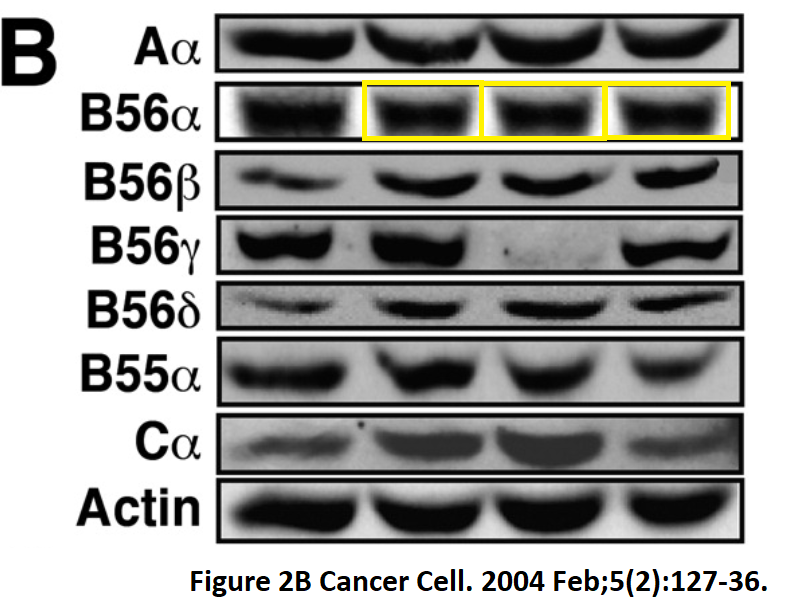
We can quickly complete the Cell, Nature, Science trifecta for this blog post with another collaboration between Bill and Sabatini published in Nature which includes duplicated flow cytometry histograms, sensibly tucked away in the supplementary data. James E. Bradner (formerly executive committee member of Novartis, and just last week announced as the new chief scientific officer of Amgen) earns another mention on For Better Science.
Scott R. Floyd, Michael E. Pacold, Qiuying Huang, Scott M. Clarke, Fred C. Lam, Ian G. Cannell, Bryan D. Bryson, Jonathan Rameseder, Michael J. Lee, Emily J. Blake, Anna Fydrych, Richard Ho, Benjamin A. Greenberger, Grace C. Chen, Amanda Maffa, Amanda M. Del Rosario, David E. Root, Anne E. Carpenter, William C. Hahn, David M. Sabatini, Clark C. Chen, Forest M. White, James E. Bradner, Michael B. Yaffe The bromodomain protein Brd4 insulates chromatin from DNA damage signalling Nature (2013) doi: 10.1038/nature12147
This is not the only duplication of flow cytometry histograms published by Bill; another was previously identified by Elisabeth Bik:
Sheila A Stewart, Derek M Dykxhoorn, Deborah Palliser, Hana Mizuno, Evan Y Yu, Dong Sung An, David M Sabatini, Irvin S Y Chen, William C Hahn, Phillip A Sharp, Robert A Weinberg, Carl D Novina Lentivirus-delivered stable gene silencing by RNAi in primary cells RNA (2003)
doi: 10.1261/rna.2192803
Bill apparently collects collaborations with longevity weirdos, including this paper with another obnoxious David: the Harvard professor David A. Sinclair. Something was clumsily hidden by cloning a rectangular section from a nearby lane. What was concealed? We will likely never know, but at least one of the authors must have felt it was important enough to hide.
Ron Firestein, Gil Blander, Shaday Michan, Philipp Oberdoerffer, Shuji Ogino, Jennifer Campbell, Anupama Bhimavarapu, Sandra Luikenhuis, Rafael De Cabo, Charles Fuchs, William C. Hahn, Leonard P. Guarente, David A. Sinclair The SIRT1 deacetylase suppresses intestinal tumorigenesis and colon cancer growth PLoS ONE (2008) doi: 10.1371/journal.pone.0002020
This finding was previously mentioned on For Better Science when discussing the work of Leonard Guarente, Sinclair’s mentor:
The original sins of Leonard Guarente
“Without specific and credible allegations of research misconduct, MIT is unable to take any action.”
In his quest to befriend anti-aging cheaters, Bill has also travelled to Germany, where he collaborated with the shooting star Karl Lenhard Rudolph (who later became the nation’s most famous zombie scientist).
Karl Lenhard Rudolph barred from DFG funding for 2 years, as supportive peers flock to his conference
More bad news for Karl Lenhard Rudolph: misconduct findings and 2 year funding ban from DFG. Good news: the international scientific community stands to him in solidarity, no retractions, even some corrections won’t be implemented.
The following paper stems from Rudolph’s time at Hannover Medical School, and it was therefore not part of the 2016 misconduct investigation by the Leibniz Association. The penultimate author is Hannover Medical School’s current president, Michael P. Manns.
A Satyanarayana, R A Greenberg, S Schaetzlein, J Buer, K Masutomi, W C Hahn, S Zimmermann, U Martens, M P Manns, K L Rudolph Mitogen stimulation cooperates with telomere shortening to activate DNA damage responses and senescence signaling Molecular and Cellular Biology (2004) doi: 10.1128/mcb.24.12.5459-5474.2004
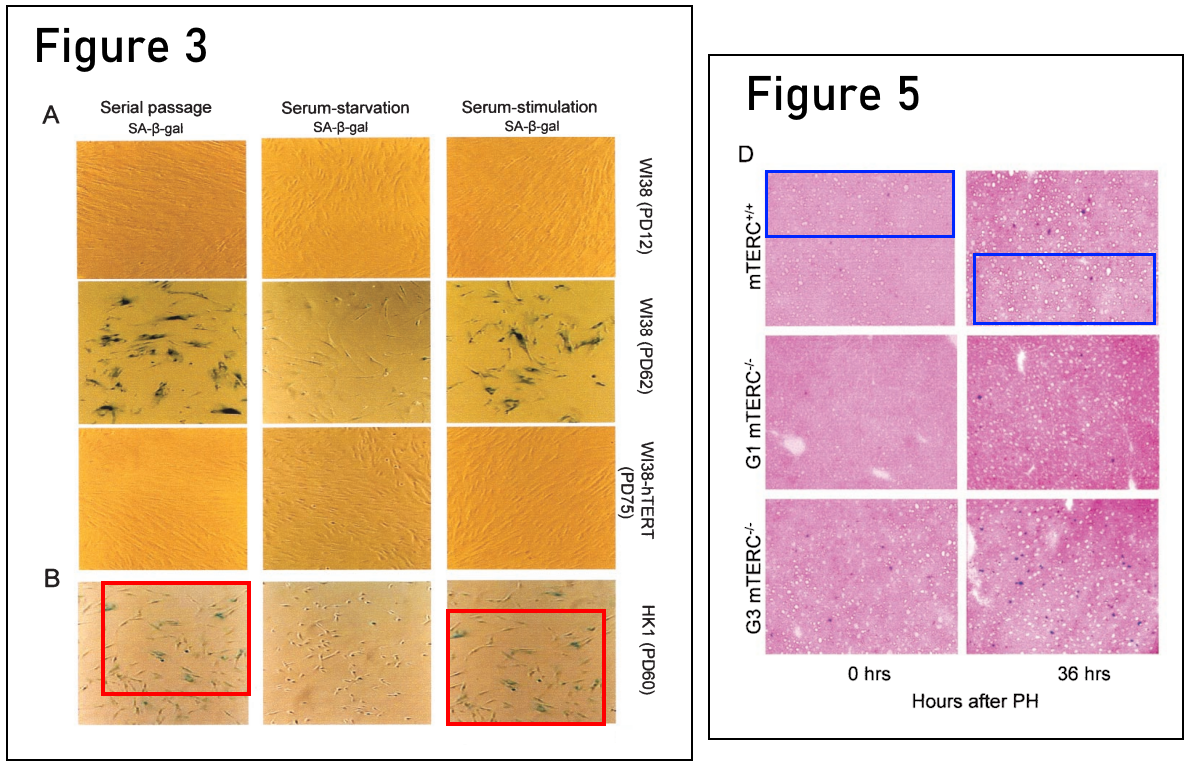
Bill works with lots of prestigious collaborators, Massimo Loda is the current Editor-in-Chief of Molecular Cancer Research, an AACR journal (a publisher you can find frequently in this blog post).
AACR deploys Massimo Loda on a mission to cure cancer
Meet Massimo Loda, the new EiC of Molecular Cancer Research. Not despite, but because of his PubPeer record. Also meet his partner Michele Pagano!
Raanan Berger, Phillip G. Febbo, Pradip K. Majumder, Jean J. Zhao, Shayan Mukherjee, Sabina Signoretti, K. Thirza Campbell, William R. Sellers, Thomas M. Roberts, Massimo Loda, Todd R. Golub, William C. Hahn Androgen-induced differentiation and tumorigenicity of human prostate epithelial cells Cancer Research (2004) doi: 10.1158/0008-5472.can-04-2938

Worth mentioning that Thomas M. Roberts is another DFCI researcher and Harvard professor, and so is his former postdoc Jean Zhao; they have a PubPeer record of their own, with and without Bill.
Here is Bill with another DFCI colleague, James DeCaprio:
Anna A. Sablina, Wen Chen, Jason D. Arroyo, Laura Corral, Melissa Hector, Sara E. Bulmer, James A. DeCaprio, William C. Hahn The tumor suppressor PP2A Abeta regulates the RalA GTPase Cell (2007) doi: 10.1016/j.cell.2007.03.047

In 2020, DeCaprio corrected a Nature Cell Biology paper Park et al 2020 because “the western blot image for VINC in Fig. 3g was a duplicate of that for LSD1.” So duplicated blots should be corrected? Plenty of work to be done in that regard!
Another impressive titan of industry, Bill published with current Head of Global Product Development and Chief Medical Officer of Roche, Levi Garraway in 2011.
Nikhil Wagle, Caroline Emery, Michael F. Berger, Matthew J. Davis, Allison Sawyer, Panisa Pochanard, Sarah M. Kehoe, Cory M. Johannessen, Laura E. MacConaill, William C. Hahn, Matthew Meyerson, Levi A. Garraway Dissecting therapeutic resistance to RAF inhibition in melanoma by tumor genomic profiling Journal of Clinical Oncology (2011)
doi: 10.1200/jco.2010.33.2312

But don’t rush to alert Roche, their former Global Head of Pharma Research and Early Development was John C Reed, who was previously at Sanofi, and is now at Johnson & Johnson. Good to know that in Big Pharma research is in such safe hands.
Sanofi R&D Head John Reed knows how to science
In 2018, the pharma giant Sanofi appointed with John Reed a new R&D head. Apparently Sanofi does not believe in PubPeer.
More troubling western blots in motion at DFCI, with Bill as the penultimate author.
Hailing Cheng, Pixu Liu, Zhigang C Wang, Lihua Zou, Stephanie Santiago, Victoria Garbitt, Ole V Gjoerup, J Dirk Iglehart, Alexander Miron, Andrea L Richardson, William C Hahn, Jean J Zhao SIK1 couples LKB1 to p53-dependent anoikis and suppresses metastasis Science Signaling (2009)
doi: 10.1126/scisignal.2000369
And finally for Bill, another paper in Nature, with Bob Weinberg, containing multiple splices, and a mirrored band (I also think the migration of the Large-T bands seems unusual). This paper has over 3000 citations… So probably nothing urgent here for Nature to address?
William C. Hahn, Christopher M. Counter, Ante S. Lundberg, Roderick L. Beijersbergen, Mary W. Brooks, Robert A. Weinberg Creation of human tumour cells with defined genetic elements Nature (1999) doi: 10.1038/22780

Irene M. Ghobrial
Moving on to Irene M. Ghobrial, who is the Senior Vice President for Experimental Medicine at DFCI. Irene works on multiple myeloma, frequently publishing with her DFCI colleagues Kenneth C. Anderson, Nikhil C. Munshi, Teru Hideshima, Ruben Carrasco, and Yu-Tzu Tai.
What kind of research has elevated Irene to her current position?
In 2012 this epic fail was published, Irene gained ethical approval to aspirate bone marrow from cancer patients and healthy volunteers, but Figure 1 includes three obvious duplications.
Feda Azab, Abdel Kareem Azab, Patricia Maiso, Teresa Calimeri, Ludmila Flores, Yang Liu, Phong Quang, Aldo M. Roccaro, Antonio Sacco, Hai T. Ngo, Yong Zhang, Brittany L. Morgan, Ruben D. Carrasco, Irene M. Ghobrial Eph-B2/ephrin-B2 interaction plays a major role in the adhesion and proliferation of Waldenstrom’s macroglobulinemia Clinical Cancer Research (2012)
doi: 10.1158/1078-0432.ccr-11-0111
Wouldn’t the volunteers be furious after undergoing such an invasive procedure? Can the data from a paper like this ever be rehabilitated?
Just like hapless Chinese papermills, Harvard scientists struggle with images of crystal violet stained cells. Perhaps this method is just cursed?
Paola Neri, Li Ren, Abdel Kareem Azab, Matthew Brentnall, Kathy Gratton, Alexander C. Klimowicz, Charles Lin, Peter Duggan, Pierfrancesco Tassone, Adnan Mansoor, Douglas A. Stewart, Lawrence H. Boise, Irene M. Ghobrial, Nizar J. Bahlis Integrin β7-mediated regulation of multiple myeloma cell adhesion, migration, and invasion Blood (2011) doi: 10.1182/blood-2010-06-292243
Another blunder in troublesome migration and invasion experiments was published with John Crown, an Irish politician and member of the 24th Seanad at the time this paper was submitted.
Claire Corcoran, Sweta Rani, Susan Breslin, Martina Gogarty, Irene M Ghobrial, John Crown, Lorraine O’Driscoll miR-630 targets IGF1R to regulate response to HER-targeting drugs and overall cancer cell progression in HER2 over-expressing breast cancer Molecular Cancer (2014)
doi: 10.1186/1476-4598-13-71
Like her colleagues mentioned above, Irene also has trouble with counting, how many Harvard researchers does it take to count to seven I wonder?
Alissa Huston, Xavier Leleu, Xiaoying Jia, Anne-Sophie Moreau, Hai T. Ngo, Judith Runnels, Judy Anderson, Yazan Alsayed, Aldo Roccaro, Sonia Vallet, Evdoxia Hatjiharissi, Yu-Tsu Tai, Peter Sportelli, Nikhil Munshi, Paul Richardson, Teru Hideshima, David G. Roodman, Kenneth C. Anderson, Irene M. Ghobrial Targeting Akt and Heat Shock Protein 90 Produces Synergistic Multiple Myeloma Cell Cytotoxicity in the Bone Marrow Microenvironment Clinical Cancer Research (2008) doi: 10.1158/1078-0432.ccr-07-1299
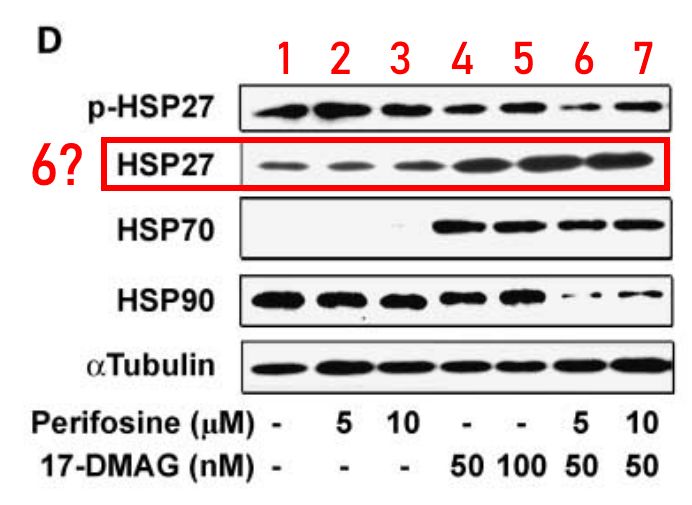
As with Bill, there are plenty of western blot duplications to enjoy, too.
Abdel Kareem Azab, Feda Azab, Simona Blotta, Costas M. Pitsillides, Brian Thompson, Judith M. Runnels, Aldo M. Roccaro, Hai T. Ngo, Molly R. Melhem, Antonio Sacco, Xiaoying Jia, Kenneth C. Anderson, Charles P. Lin, Barrett J. Rollins, Irene M. Ghobrial RhoA and Rac1 GTPases play major and differential roles in stromal cell-derived factor-1-induced cell adhesion and chemotaxis in multiple myeloma Blood (2009) doi: 10.1182/blood-2009-01-199281
Ruben Carrasco is another DFCI scientist and frequent collaborator of Irene’s. He is listed as a former postdoc of Ronald DePinho (who caused a financial catastrophe as President of MD Anderson in Texas). Read more on Ron here:
Anil Sood and other questionable stars of MD Anderson
The MD Anderson Cancer Center, part of the University of Texas and located in Houston, is a giant hub of huge cancer research money, even for US standards. They also do a lot of science there, which only purpose seems to be publishing in big journals in order to generate even more money. If there…
Abdel Kareem Azab, Phong Quang, Feda Azab, Costas Pitsillides, Brian Thompson, Triona Chonghaile, John T Patton, Patricia Maiso, Val Monrose, Antonio Sacco, Hai T Ngo, Ludmila M Flores, Charles P Lin, John L Magnani, Andrew L Kung, Anthony Letai, Ruben Carrasco, Aldo M Roccaro, Irene M Ghobrial
P-selectin glycoprotein ligand regulates the interaction of multiple myeloma cells with the bone marrow microenvironment
Blood (2012) doi: 10.1182/blood-2011-07-368050
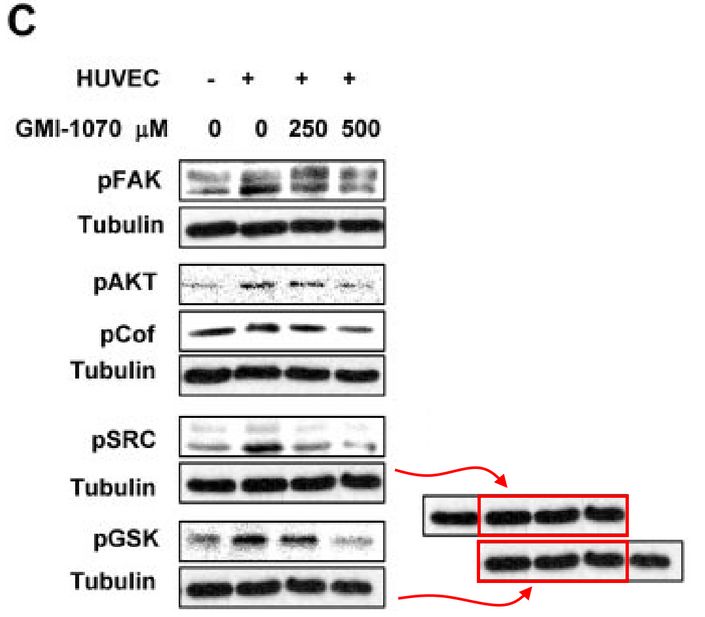
Perhaps one can only learn bad science from DePinho, who was the postdoctoral adviser for Ned Sharpless, subject of my last blog post.
Sharpless Ned, or how half a mouse died
“The President’s goal of ending cancer as we know it today is grounded, in part, in the work of scientific discovery that Ned Sharpless has led at NCI”
Who could be to blame for this supplemental silliness? The splice, which the authors did not try to hide, is hard to justify in the first place, never mind that loading controls were simply borrowed from the above blot.
Michal Bar‐Natan, Dina Stroopinsky, Katarina Luptakova, Maxwell D. Coll, Arie Apel, Hasan Rajabi, Athalia R. Pyzer, Kristen Palmer, Michaela R. Reagan, Myrna R. Nahas, Rebecca Karp Leaf, Salvia Jain, Jon Arnason, Irene M. Ghobrial, Kenneth C. Anderson, Donald Kufe, Jacalyn Rosenblatt, David Avigan Bone marrow stroma protects myeloma cells from cytotoxic damage via induction of the oncoprotein MUC1 British Journal of Haematology (2017) doi: 10.1111/bjh.14493
Irene’s Italian mentee, Aldo Roccaro, previously worked at the DFCI and has subsequently returned to Italy, where he now a clinical research director at the hospital in Brescia, and a member of the ethics commission.
Aldo M Roccaro, Antonio Sacco, Xiaojing Jia, Ranjit Banwait, Patricia Maiso, Feda Azab, Ludmila Flores, Salomon Manier, Abdel Kareem Azab, Irene M Ghobrial Mechanisms of activity of the TORC1 inhibitor everolimus in Waldenstrom macroglobulinemia Clinical Cancer Research (2012) doi: 10.1158/1078-0432.ccr-12-1532
I am also concerned about images of mice. In the figure below, a group of mice has made a knight move across the page, and transitioned between groups. Thinking about what Irene’s team may have wished to demonstrate (lack of cancer spread in their favoured group) this appears to be a very convenient error.
Yu Zhang, Michele Moschetta, Daisy Huynh, Yu-Tzu Tai, Yong Zhang, Wenjing Zhang, Yuji Mishima, Jennifer E. Ring, Winnie F. Tam, Qunli Xu, Patricia Maiso, Michaela Reagan, Ilyas Sahin, Antonio Sacco, Salomon Manier, Yosra Aljawai, Siobhan Glavey, Nikhil C. Munshi, Kenneth C. Anderson, Jonathan Pachter, Aldo M. Roccaro, Irene M. Ghobrial Pyk2 promotes tumor progression in multiple myeloma Blood (2014) doi: 10.1182/blood-2014-03-563981
Another problematic murine figure is shown below. This appears to be nearly entirely fabricated by taking repeated scans of a few mice and labelling them as showing a range of different timepoints and treatment conditions. Look carefully at the positions of the tail, feet, fur, and elements of noise around the mice.
Abdel Kareem Azab, Judith M. Runnels, Costas Pitsillides, Anne-Sophie Moreau, Feda Azab, Xavier Leleu, Xiaoying Jia, Renee Wright, Beatriz Ospina, Alicia L. Carlson, Clemens Alt, Nicholas Burwick, Aldo M. Roccaro, Hai T. Ngo, Mena Farag, Molly R. Melhem, Antonio Sacco, Nikhil C. Munshi, Teru Hideshima, Barrett J. Rollins, Kenneth C. Anderson, Andrew L. Kung, Charles P. Lin, Irene M. Ghobrial CXCR4 inhibitor AMD3100 disrupts the interaction of multiple myeloma cells with the bone marrow microenvironment and enhances their sensitivity to therapy Blood (2009) doi: 10.1182/blood-2008-10-186668

Kenneth C. Anderson (Ken)
As mentioned previously, Irene frequently publishes with Kenneth C. Anderson (you may have noticed above). Ken is also a senior DFCI researcher. Perhaps we can imagine them as Ken and Barbie?
Quite apart from his collaborations with Irene, Ken has an extensive record of problematic papers without Irene. These have been tagged on PubPeer over the last ten years. Perhaps Ken has rotten luck in choosing his collaborators? Here Ken teamed up with the previously mentioned Ron DePinho and Ruben Carrasco for an artistic interpretation of western blotting his CEO Laurie might be impressed by.
Daniel R. Carrasco, Kumar Sukhdeo, Marina Protopopova, Raktim Sinha, Miriam Enos, Daniel E. Carrasco, Mei Zheng, Mala Mani, Joel Henderson, Geraldine S. Pinkus, Nikhil Munshi, James Horner, Elena V. Ivanova, Alexei Protopopov, Kenneth C. Anderson, Giovanni Tonon, Ronald A. DePinho The differentiation and stress response factor XBP-1 drives multiple myeloma pathogenesis Cancer Cell (2007) doi: 10.1016/j.ccr.2007.02.015
How about this muddle in Nature Medicine, also with Ruben Carrasco:
Di Zhu, Zhongqiu Wang, Jian-Jun Zhao, Teresa Calimeri, Jiang Meng, Teru Hideshima, Mariateresa Fulciniti, Yue Kang, Scott B Ficarro, Yu-Tzu Tai, Zachary Hunter, Douglas McMilin, Haoxuan Tong, Constantine S Mitsiades, Catherine J Wu, Steven P Treon, David M Dorfman, Geraldine Pinkus, Nikhil C Munshi, Pierfrancesco Tassone, Jarrod A Marto, Kenneth C Anderson, Ruben D Carrasco The Cyclophilin A-CD147 complex promotes the proliferation and homing of multiple myeloma cells Nature Medicine (2015) doi: 10.1038/nm.3867
A final mix-up with Ruben Carrasco, who is associate professor in Harvard with his own lab at DFCI.
Masahisa Jinushi, Matthew Vanneman, Nikhil C. Munshi, Yu-Tzu Tai, Rao H. Prabhala, Jerome Ritz, Donna Neuberg, Kenneth C. Anderson, Daniel Ruben Carrasco, Glenn Dranoff MHC class I chain-related protein A antibodies and shedding are associated with the progression of multiple myeloma Proceedings of the National Academy of Sciences (2008) doi: 10.1073/pnas.0711293105
Another unlucky choice in scientific collaborators? Ken teamed up with Harvard’s and For Better Science celebrity Carl Ronald Kahn.
Yu-Tzu Tai, Klaus Podar, Laurence Catley, Yu-Hua Tseng, Masaharu Akiyama, Reshma Shringarpure, Renate Burger, Teru Hideshima, Dharminder Chauhan, Nicholas Mitsiades, Paul Richardson, Nikhil C Munshi, C Ronald Kahn, Constantine Mitsiades, Kenneth C Anderson Insulin-like growth factor-1 induces adhesion and migration in human multiple myeloma cells via activation of beta1-integrin and phosphatidylinositol 3′-kinase/AKT signaling Cancer Research (2003) pubmed: 14522909

C Ronald Kahn and The Problem of Irreproducible Bioscience Research
“not everyone in the research community accepts that the problem requires such attention; some believe it is overblown.” -Jeffrey Flier, emeritus dean of Harvard Medical School
James E. Bradner earns another mention for his collaboration here with Ken. Perhaps it’s time for someone to look carefully at his work? He certainly seems to be caught in the crossfire rather a lot. Also put together with the help of DFCIs star oncologist Paul G. Richardson, described in 2022 as “a giant of cancer care in myeloma“.
Teru Hideshima, Jun Qi, Ronald M. Paranal, Weiping Tang, Edward Greenberg, Nathan West, Meaghan E. Colling, Guillermina Estiu, Ralph Mazitschek, Jennifer A. Perry, Hiroto Ohguchi, Francesca Cottini, Naoya Mimura, Güllü Görgün, Yu-Tzu Tai, Paul G. Richardson, Ruben D. Carrasco, Olaf Wiest, Stuart L. Schreiber, Kenneth C. Anderson, James E. Bradner Discovery of selective small-molecule HDAC6 inhibitor for overcoming proteasome inhibitor resistance in multiple myeloma Proceedings of the National Academy of Sciences (2016)
doi: 10.1073/pnas.1608067113
Klaus Podar, formerly of DFCI, and now a professor in Germany, contributed at least two photoshopped efforts with Ken.
Marc S. Raab, Iris Breitkreutz, Giovanni Tonon, Jing Zhang, Patrick J. Hayden, Thu Nguyen, Johannes H. Fruehauf, Boris K. Lin, Dharminder Chauhan, Teru Hideshima, Nikhil C. Munshi, Kenneth C. Anderson, Klaus Podar Targeting PKC: a novel role for beta-catenin in ER stress and apoptotic signaling Blood (2009) doi: 10.1182/blood-2008-05-157040

Another one by Podar and another former postdoc of Ken’s, Yu-Tzu Tai (who is still at DFCI):
Yu-Tzu Tai, Gerrard Teoh , Boris Lin, Faith E. Davies, Dharminder Chauhan, Steven P. Treon, Noopur Raje, Teru Hideshima, Yoshihito Shima, Klaus Podar, Kenneth C. Anderson Ku86 variant expression and function in multiple myeloma cells is associated with increased sensitivity to DNA damage The Journal of Immunology (2000) doi: 10.4049/jimmunol.165.11.6347
Steven P. Treon, director of DFCI’s Bing Center for Waldenström’s Macroglobulinemia Research, is another frequent co-author.
Guang Yang, Yangsheng Zhou, Xia Liu, Lian Xu, Yang Cao, Robert J. Manning, Christopher J. Patterson, Sara J. Buhrlage, Nathanael Gray, Yu-Tzu Tai, Kenneth C. Anderson, Zachary R. Hunter, Steven P. Treon A mutation in MYD88 (L265P) supports the survival of lymphoplasmacytic cells by activation of Bruton tyrosine kinase in Waldenström macroglobulinemia
Blood (2013) doi: 10.1182/blood-2012-12-475111
Nicholas Mitsiades and Constantine Mitsiades are apparently brothers, but not clones (as these blots are).
Dharminder Chauhan, Guilan Li, Daniel Auclair, Teru Hideshima, Paul Richardson, Klaus Podar, Nicholas Mitsiades, Constantine Mitsiades, Cheng Li, Ryung Suk Kim, Nikhil Munshi, Lan Bo Chen, Wing Wong, Kenneth C. Anderson Identification of genes regulated by 2-methoxyestradiol (2ME2) in multiple myeloma cells using oligonucleotide arrays Blood (2003)
doi: 10.1182/blood-2002-10-3146
Constantine Mitsiades is now associate professor at DFCI, he and his brother have more on PubPeer. They also used to be collaborators of Germany’s untouchable top ophtalmologist Antonia Joussen (see the fabrications in Poulaki et al 2002 and Poulaki et al 2004).
DFG decision: Antonia Joussen innocent victim of co-authors’ data manipulations
“The committee […] requests of you for future publications to assess well ahead and to question critically your responsibility for the contributions of the co-authors, also for your own protection.”
The following study was likely conducted in Japan, where DFCI’s Teru Hideshima obviously has contacts, but somehow his postdoctoral advisor Ken has wrangled himself the senior authorship spot. What was his contribution here I wonder?
Masaharu Akiyama, Osamu Yamada, Teru Hideshima, Takaaki Yanagisawa, Kentaro Yokoi, Kohji Fujisawa, Yoshikatsu Eto, Hisashi Yamada, Kenneth C Anderson TNFalpha induces rapid activation and nuclear translocation of telomerase in human lymphocytes Biochemical and Biophysical Research Communications (2004) doi: 10.1016/j.bbrc.2004.02.080
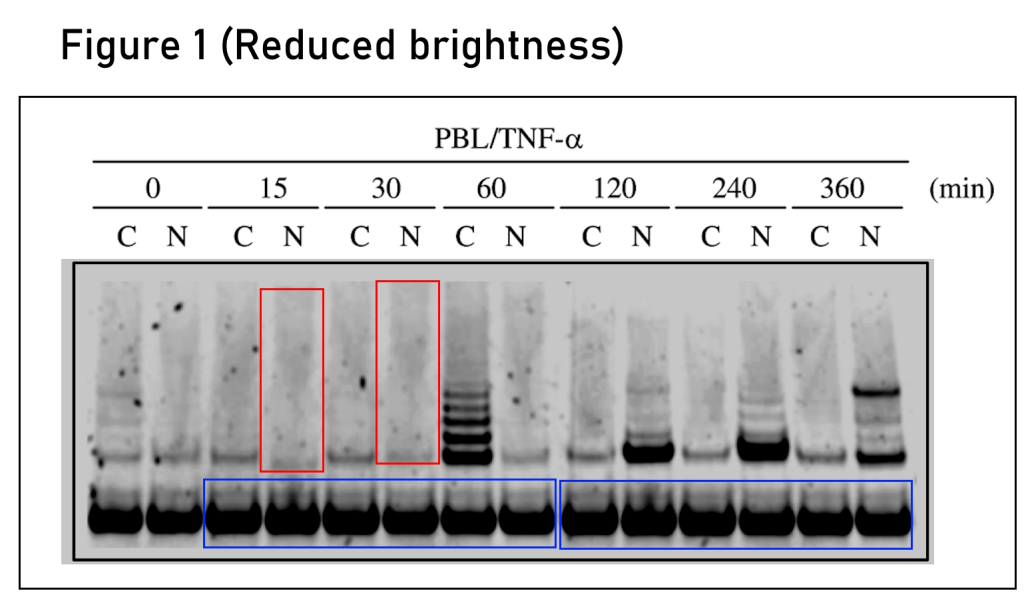
Some of Ken’s associates seem curiously dependent on him for their own research career; DFCI program director and Harvard professor Nikhil C. Munshi is a good example (there are others) who appears to have almost no independent activity.
Noopur Raje, Shaji Kumar, Teru Hideshima, Aldo Roccaro, Kenji Ishitsuka, Hiroshi Yasui, Norihiko Shiraishi, Dharminder Chauhan, Nikhil C. Munshi, Simon R. Green, Kenneth C. Anderson Seliciclib (CYC202 or R-roscovitine), a small-molecule cyclin-dependent kinase inhibitor, mediates activity via down-regulation of Mcl-1 in multiple myeloma Blood (2005) doi: 10.1182/blood-2005-01-0320

Around 2010 Ken retracted three papers in quick succession (Okawa et al 2008, Tai et al 2009, Gatt et al 2010), apparently because the cell lines were mixed up, and to be fair, it does seem like mixing things up is rather in Ken’s wheelhouse, but it does leave one wondering… Was an investigation into the affair ever held? Or were the retractions prompted by secret investigation? How much research funding can you waste on these blunders at DFCI without any consequences or any public comment?
In conclusion: a swathe of research coming out of DFCI authored by the most senior researchers and managers appears to be hopelessly corrupt with errors that are obvious from just a cursory reading the papers.
Imagine what mistakes might be found in the raw data if anyone was allowed to look!
As it happened to the Dean of Harvard Medical School, George Q Daley:
Lopez-Otin and Daley retract Nature Cell Biology paper
The 2015 Nature Cell Biology paper by the Spanish cancer researcher Carlos Lopez-Otin and his US partner George Q Daley, stem cell titan and dean of Harvard Medical School, is being retracted. First author and Lopez-Otin’s student Clara Soria-Valles caused Daley even more trouble: her next groundbreaking paper was meant to be already published, but…
As time marches on, methods have become more “genomical”, and in a lot of ways, harder to scrutinize. I had a go at replicating some of the gene expression analysis in Irene’s papers (for example, see here), and it doesn’t look hopeful, but it isn’t worth anyone’s time to write such comments if obvious errors in images are going to be left unmolested for years at a time.
In 2017, DFCI’s own future Nobel Prize winner William G. Kaelin Jr wrote an opinion piece in Nature, lamenting the proliferation of papers focusing on “impact” rather than robustness, burying weak data in supplements, cherry picking, and other poor practices, he didn’t mention fraud, although there are still some interesting quotes.
“The main question when reviewing a paper should be whether its
William G. Kaelin Jr Nature (2017)
conclusions are likely to be correct, not whether it would be important
if it were true. Real advances are built with bricks, not straw. “
What exactly is the building material of choice at DFCI?
Gregg Semenza: real Nobel Prize and unreal research data
“Even after people have been telling you for, you know, 20 years or more that it’s going to happen, no one expects it.” -Gregg Semenza, Nobel Prize winner 2019
Credit should go to the anonymous and named commenters on PubPeer, Bill and Ken’s papers have been annotated over the last ten years, I presume frequently by Clare Francis. Some of the more recent comment’s especially on Irene’s papers were left by me, sometimes with the help of ImageTwin.ai. Other known contributors include Cheshire, and Elisabeth Bik. Written with some help from Leonid.

I thank all my donors for supporting my journalism. You can be one of them!
Make a one-time donation:
I thank all my donors for supporting my journalism. You can be one of them!
Make a monthly donation:
Choose an amount
Or enter a custom amount
Your contribution is appreciated.
Your contribution is appreciated.
DonateDonate monthly

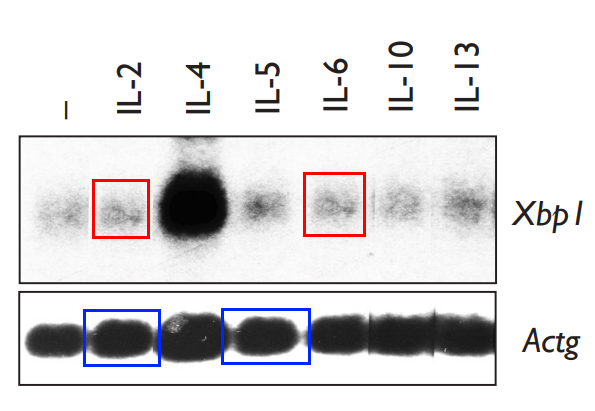
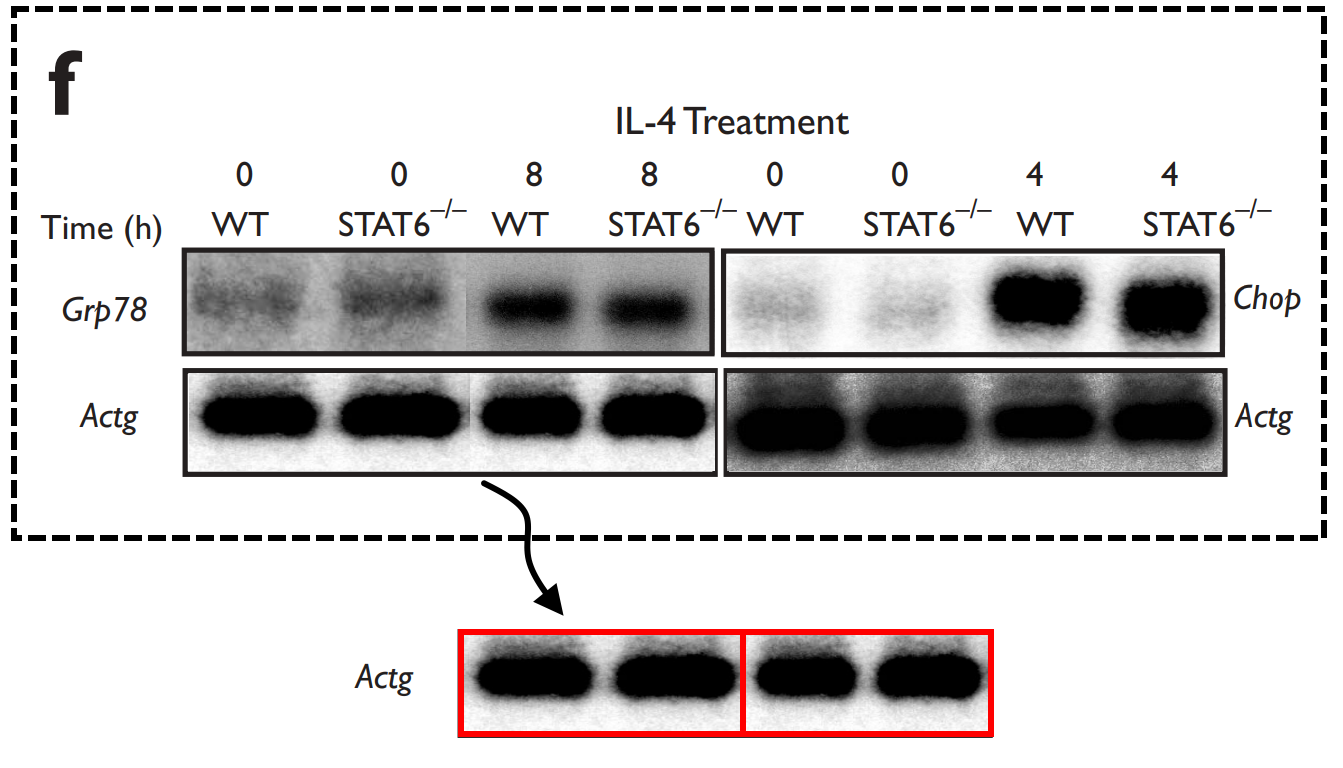
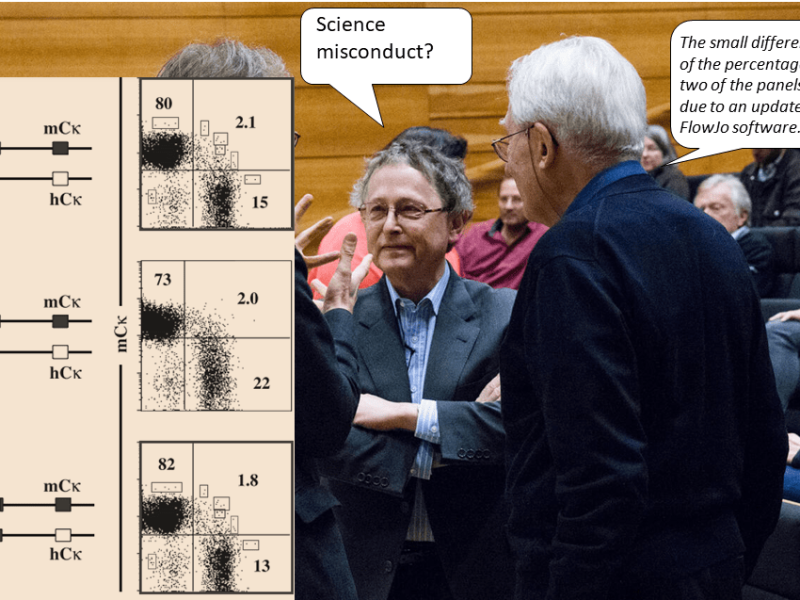
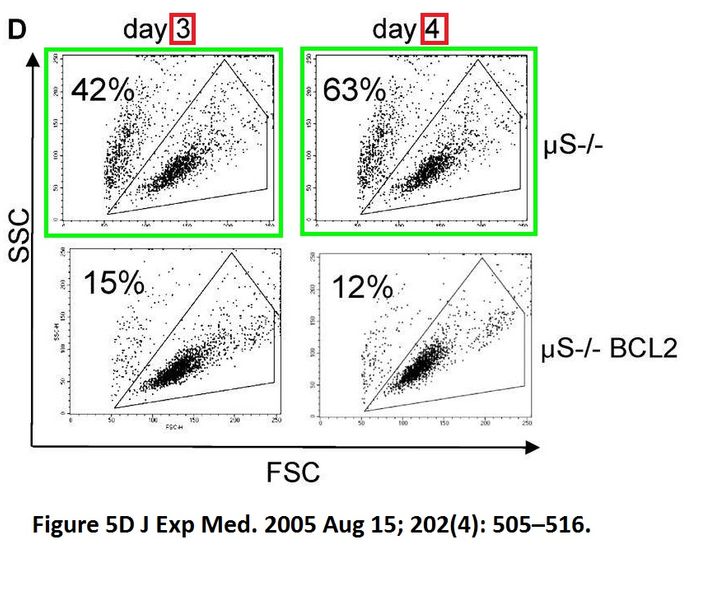

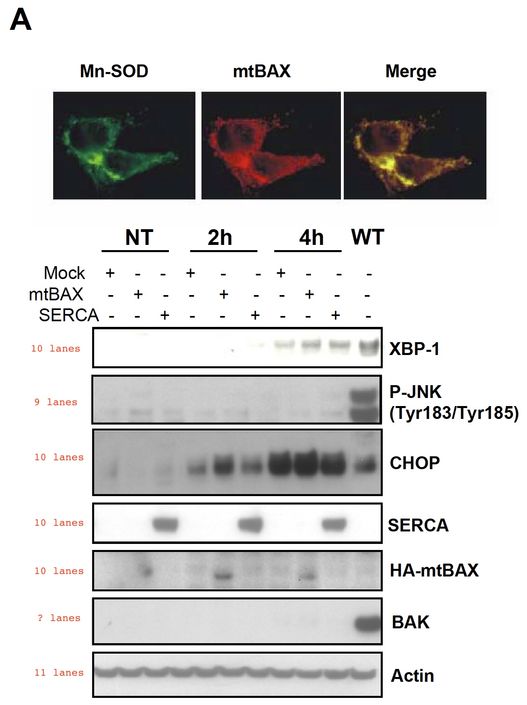
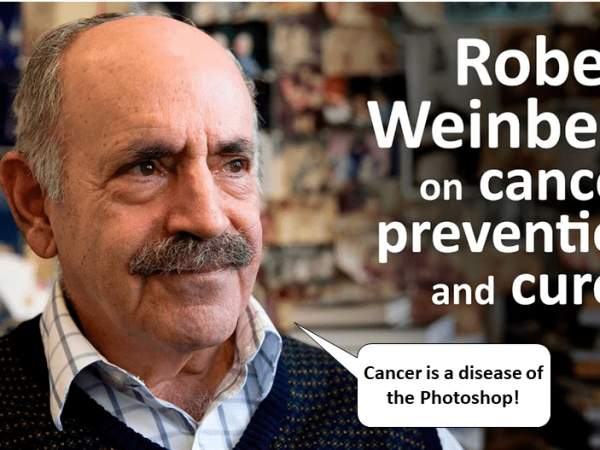

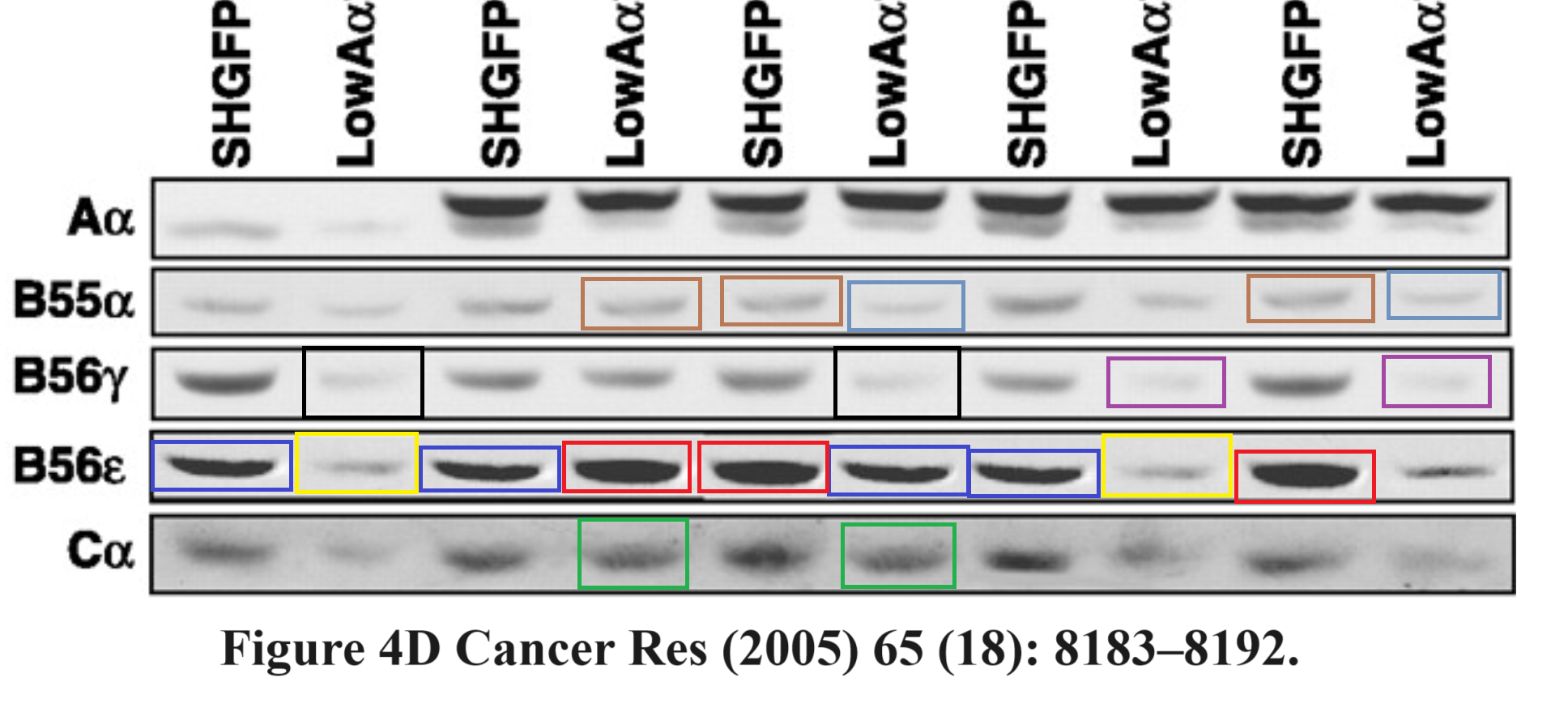
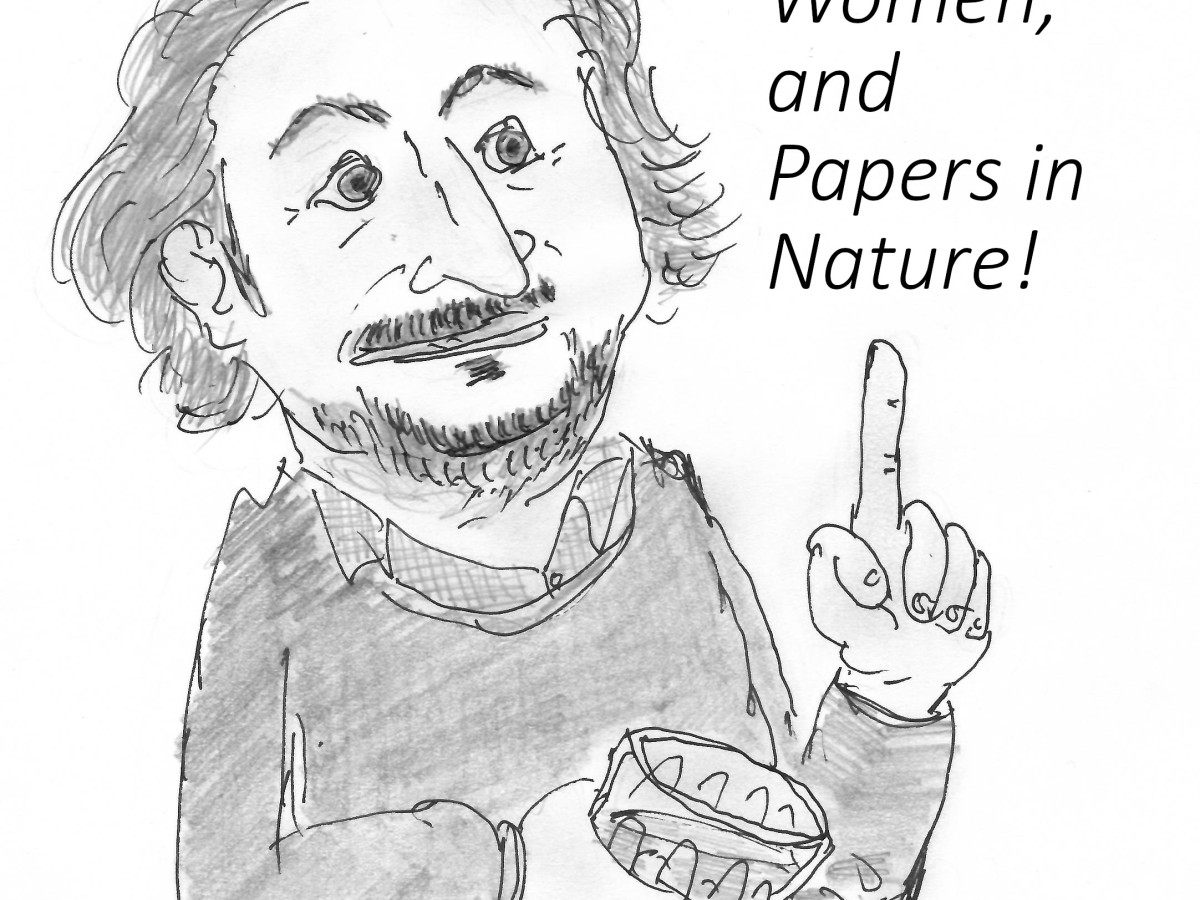
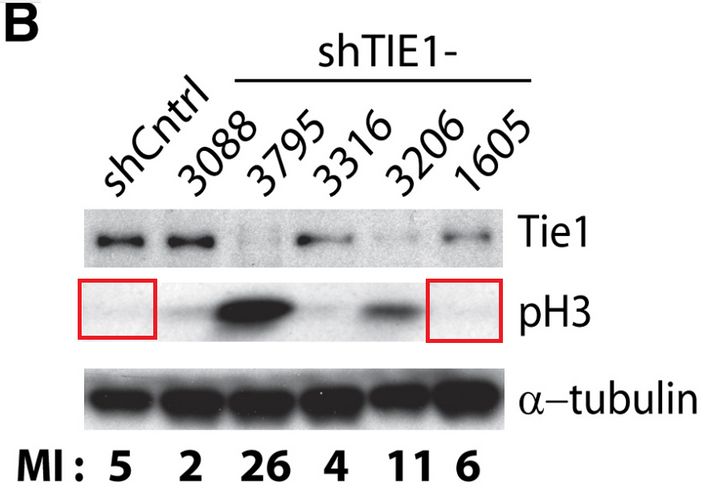

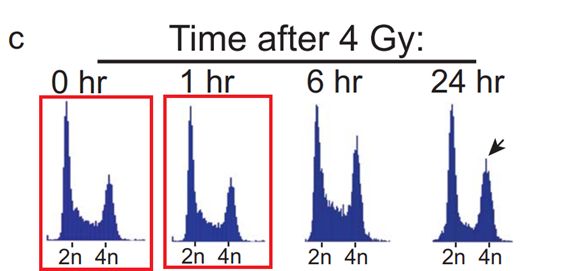
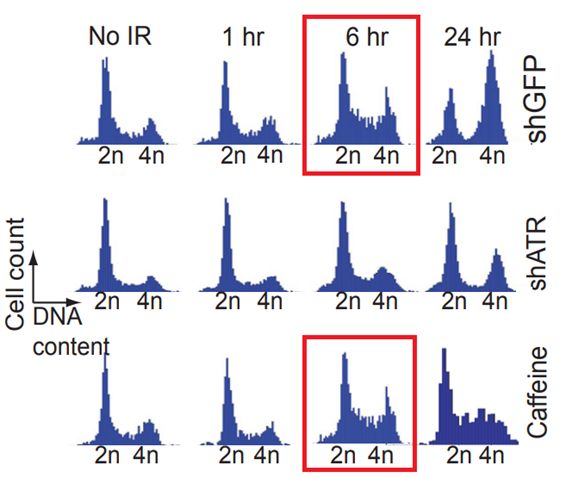

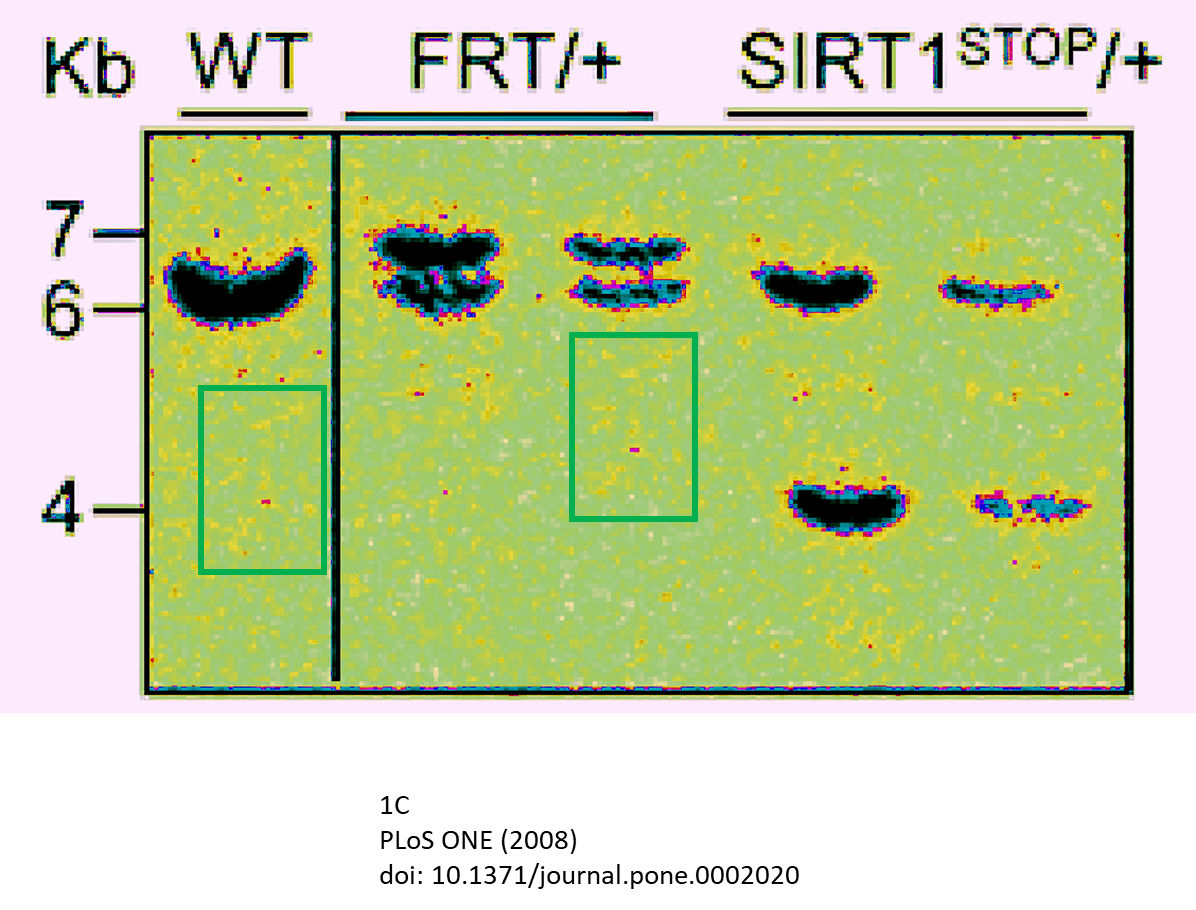

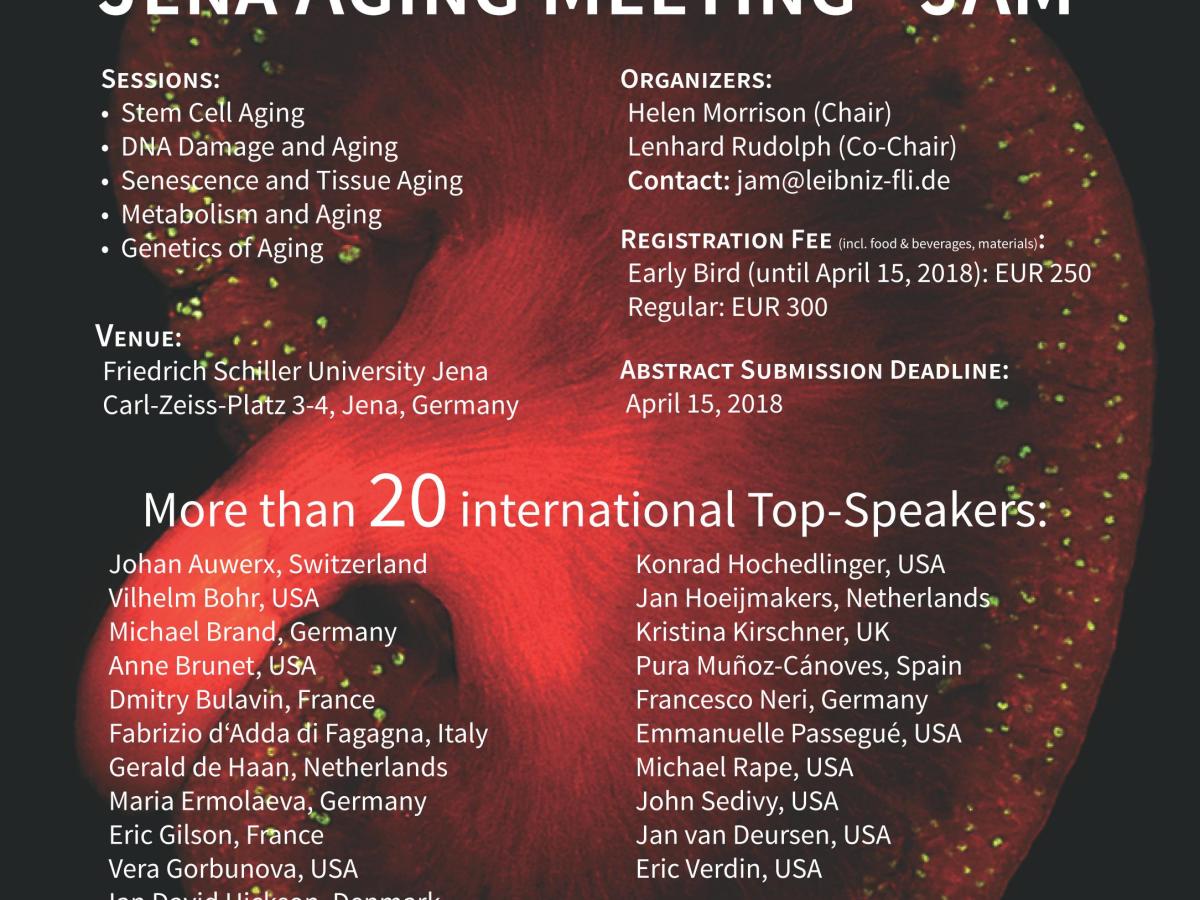
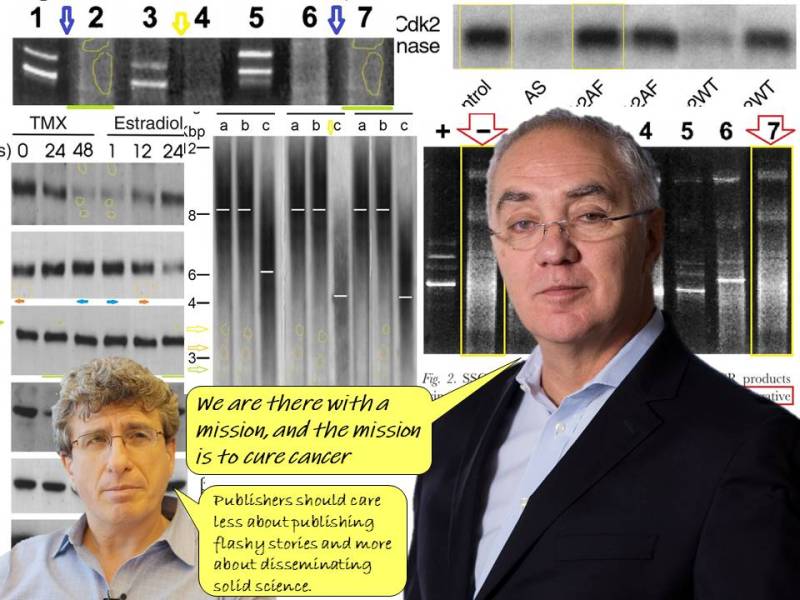




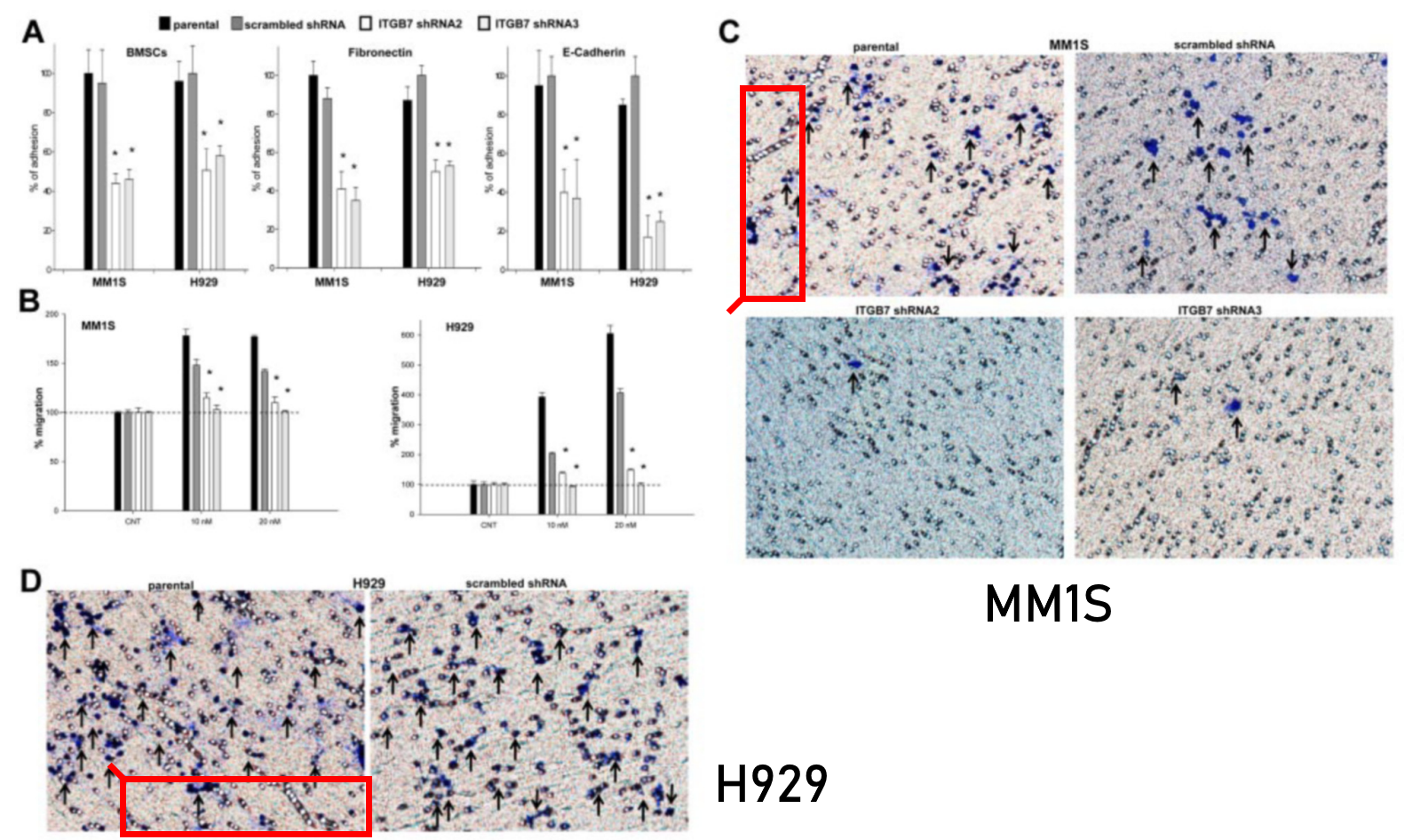
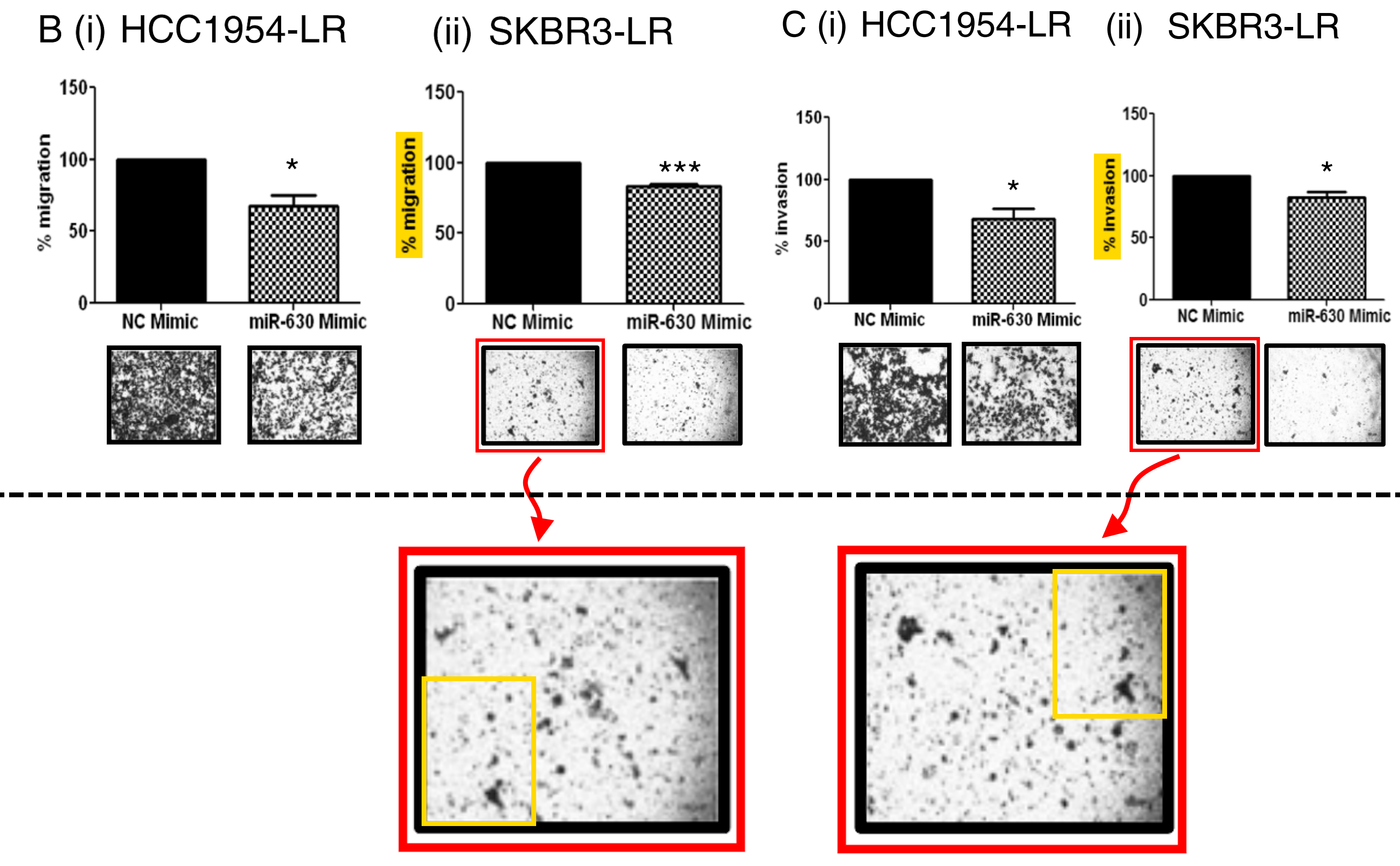
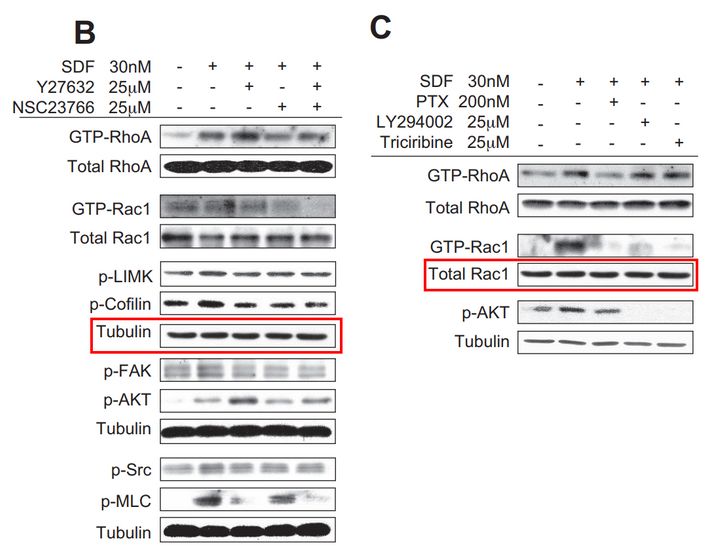


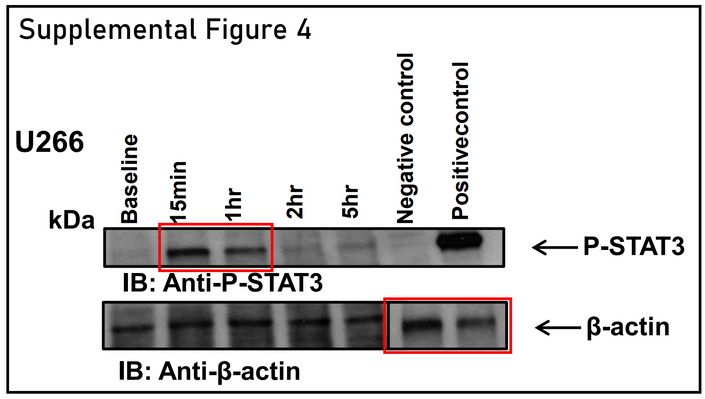
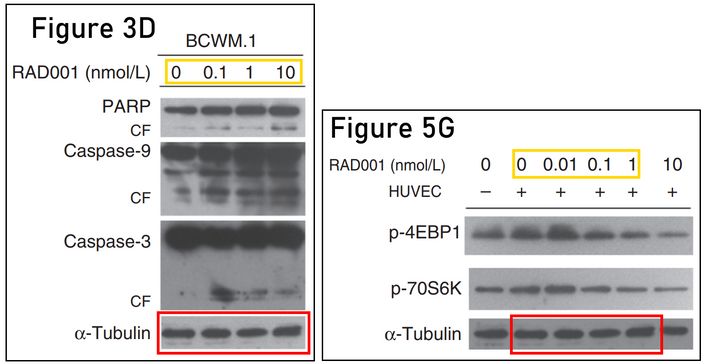


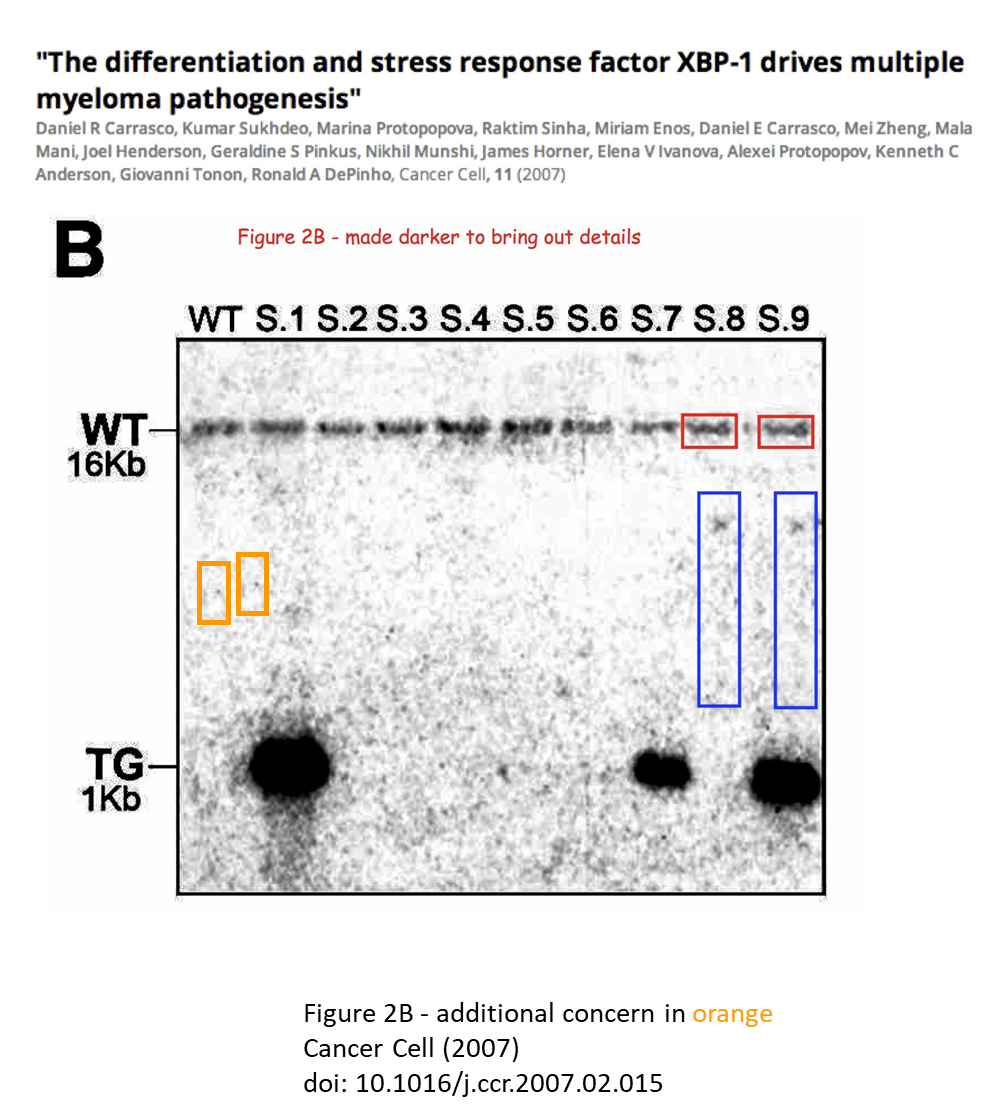
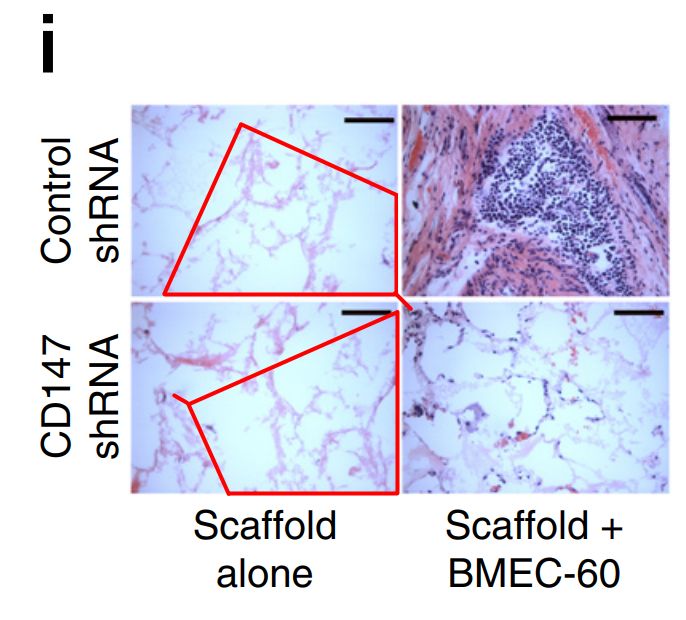
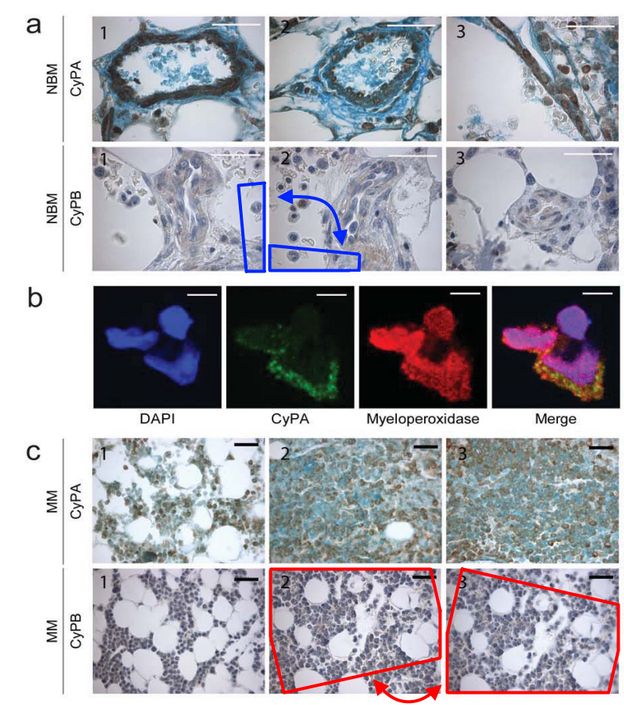

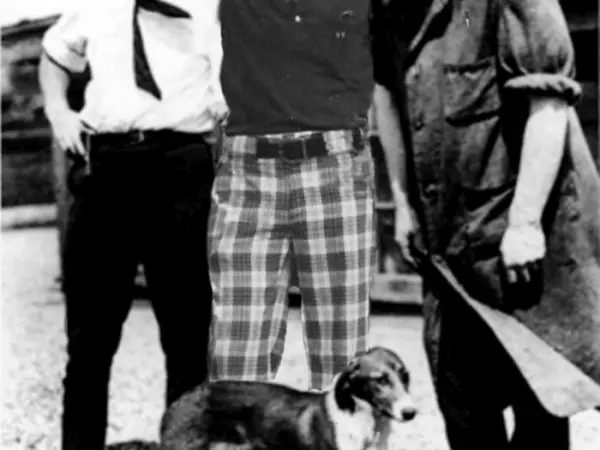
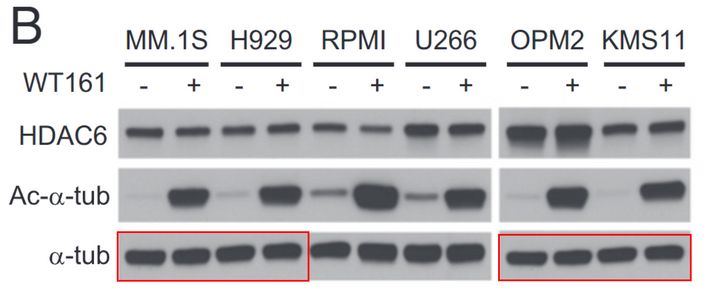
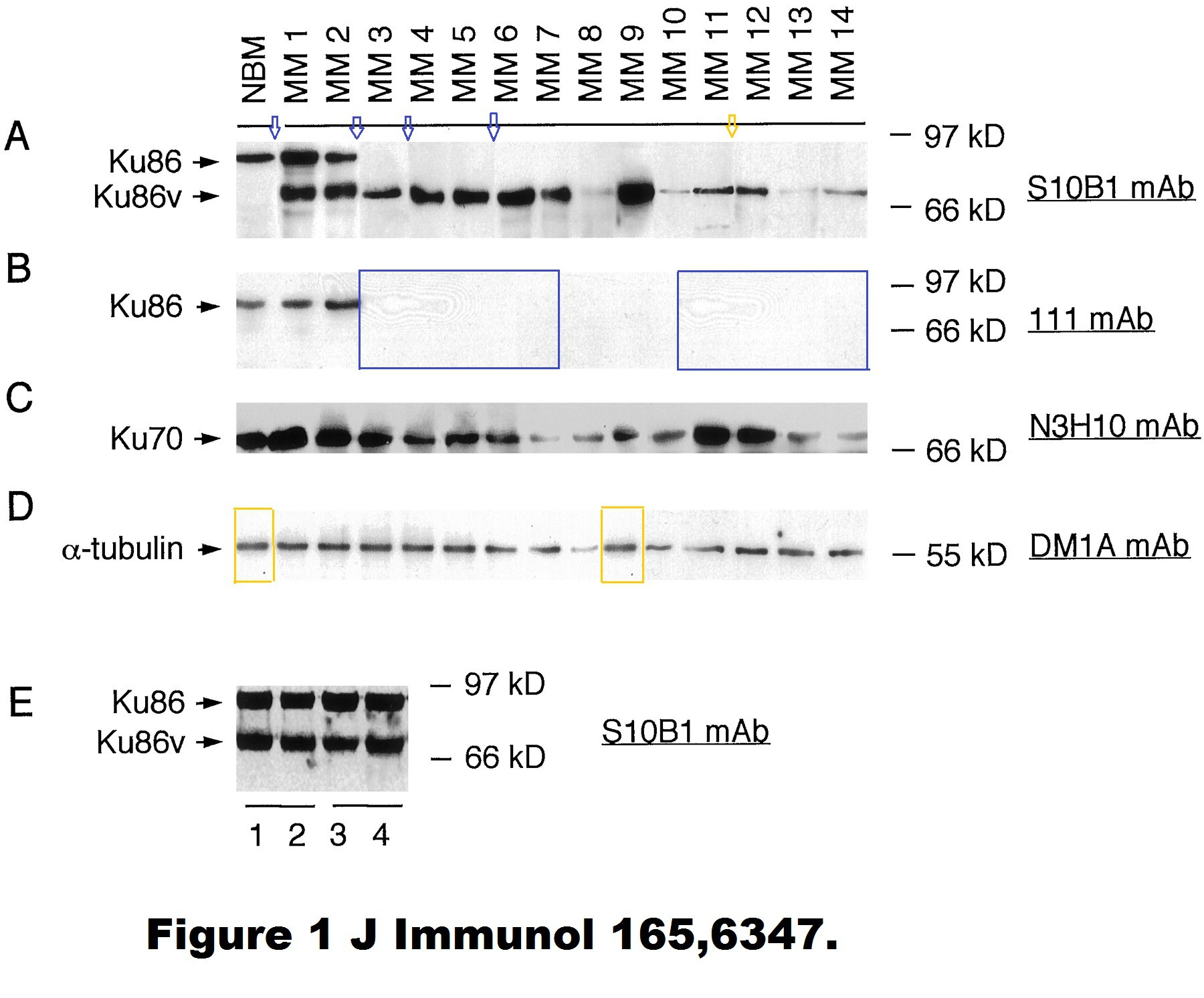
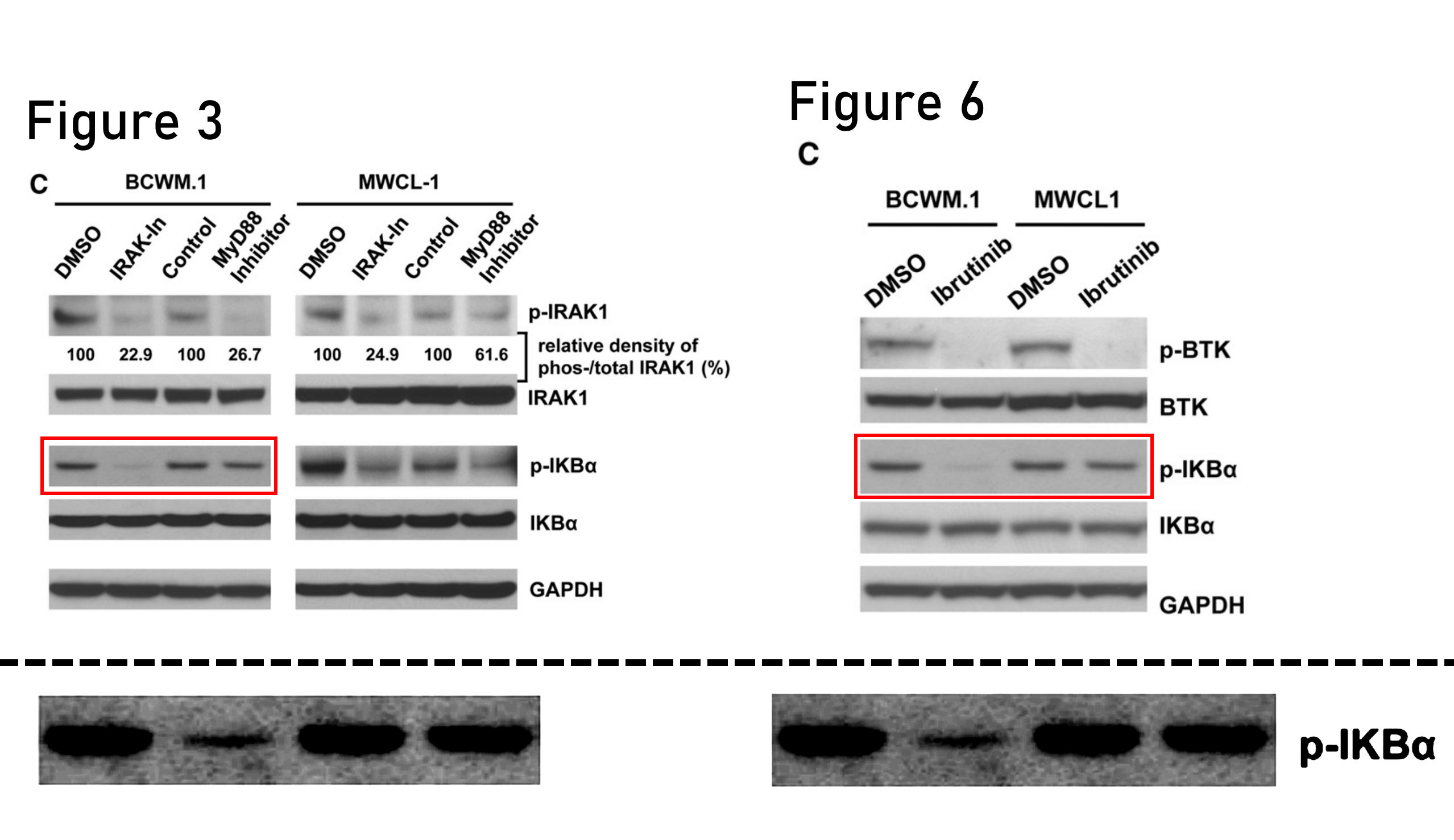
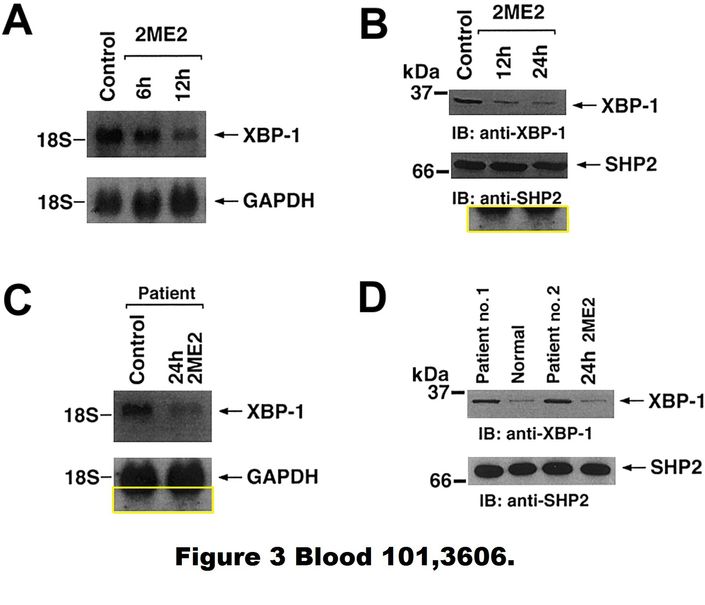

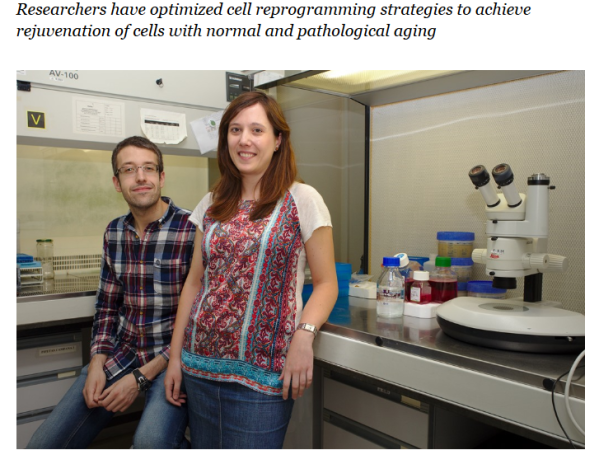
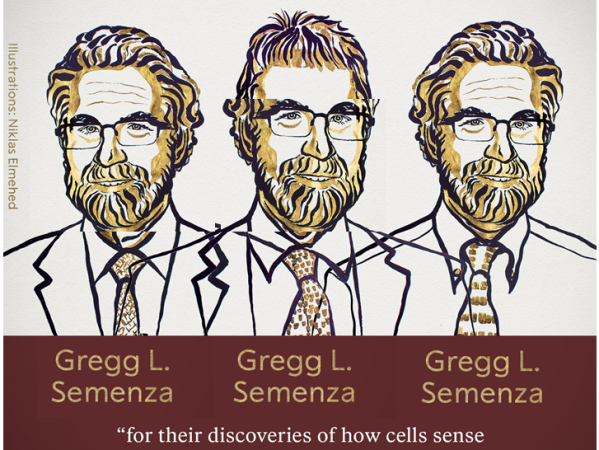

“As the whole world furiously argues over whether the president of Harvard did or didn’t use some quotation marks in the right place…”
Imitation is the sincerest form of flattery that mediocrity can pay to greatness.
Oscar Wilde
I think he was referring to himself!
I don’t know if he’d be on the curriculum at Harvard. A man, he died at 46 so not that old, Irish. How to categorise?
LikeLike
This is how internal corruption can demolish centuries built reputation!
LikeLike
“What exactly is the building material of choice at DFCI?”
Crap!
LikeLike
Yeah, but you know… science fraud is supposed to happen just at bullshit institutions in bullshit countries, right? LOL.
LikeLike
Harvard, founded 1636, is quite a few years older than the country, independence 1776.
Harvard sets the tone. It is the top drawer.
LikeLike
The circus is back in town… Wait! It never left!
https://www.businessinsider.com/bill-ackman-wife-neri-oxman-mit-dissertation-plagiarism-2024-1
‘Billionaire hedge fund manager and major Harvard donor Bill Ackman seized on revelations that Harvard president Claudine Gay had plagiarized some passages in her academic work to underscore his calls for her removal following what he perceived as her mishandling of large protests against Israel’s bombardment of Gaza on Harvard’s campus.
An analysis by Business Insider found a similar pattern of plagiarism by Ackman’s wife Neri Oxman, who became a tenured professor at MIT in 2017.
Oxman plagiarized multiple paragraphs of her 2010 doctoral dissertation, Business Insider found, including at least one passage directly lifted from other writers without citation.
Her husband Ackman has taken a hardline stance on plagiarism. On Wednesday, responding to news that Gay will remain a part of Harvard’s faculty after she resigned as president, he wrote on X that Gay should be fired completely due to “serious plagiarism issues.”
“Students are forced to withdraw for much less,” Ackman continued. “Rewarding her with a highly paid faculty position sets a very bad precedent for academic integrity at Harvard.”
An architect and artist who experiments with new ways to synthesize materials found in nature, Oxman has been the subject of profiles in major outlets such as the New York Times and Elle. She collaborated with Björk, exhibited at MOMA, and had paparazzi stake her out after Brad Pitt visited her lab at MIT in 2018.’
LikeLike
Popcorn ready?
Bill Ackman
@BillAckman
My wife, @NeriOxman, was just contacted by Business Insider claiming that they have identified other plagiarism in her work including 15 examples in her dissertation where she did not cite Wikipedia as a source.
Business Insider told us that they are publishing their story this evening. As a result, we don’t have time to research their claims prior to publication.
It is unfortunate that my actions to address problems in higher education have led to these attacks on my family.
This experience has inspired me to save all news organizations from the trouble of doing plagiarism reviews.
We will begin with a review of the work of all current @MIT faculty members, President Kornbluth, other officers of the Corporation, and its board members for plagiarism.
We will be using MIT’s own plagiarism standards which can be found here:
https://integrity.mit.edu/handbook/what-plagiarism
We will share our findings in the public domain as they are completed in the spirit of transparency.
LikeLiked by 1 person
MIT should rescind Oxman’s PhD thesis if plagiarism counts as misconduct worthy of a fraudulent PhD. Fortunately for her she is no longer faculty there.
Most interesting analysis I’ve heard on the Claudine Gay case (if you can stomach the conservative slant):
LikeLike
Bill Ackman? Ah, I remember… big fan/financial supporter of David Sabatini, who had to endure all these unfair investigations of sexual misconduct… see Schneider Shorts 10.2.23.
However, I never heard of this Neri Oxman Super Star of Science:
“In August 2019, Ackman wrote to MIT Media Lab director Joi Ito to discourage him from mentioning Oxman when discussing convicted sex offender Jeffrey Epstein, who had donated $125,000 to Oxman’s lab.” (Wikipedia)
The problems of the super-rich…
LikeLiked by 1 person
It will all be addressed with the usual Harvard efficiency.
“We’re at a stage of generating thinking about it, rather than taking concrete steps,”
Dean of Undergraduate Education Amanda Claybaugh
https://www.thecrimson.com/article/2023/10/5/faculty-debate-grade-inflation-compression/
LikeLike
The identical mouse problems could easily be solved. You can even buy vegan ones.
LikeLike
Besides DFCI, Brigham and Women’s Hospital of Harvard seems to be a paper factory run by Joseph Loscalzo, Piero Anversa, Augustine Choi (now at Cornell), Edward Whang, etc.
LikeLike
Laurie Glimcher says she doesn’t suffer fools. But she suffers the fraudster Claudio Hetz, and now Claudio is a scientist at the Buck Institute. See what happens when you write nice letters of recommendation for the cheating twits that worked for you, Laurie?
https://www.buckinstitute.org/lab/hetz-lab/
LikeLiked by 1 person
Are we expecting Laurie to act on the fools at DFCI? Apparently she’s the CEO, so what should happen with Bill and Ken the flowerpot men? The cheating is so obvious, but the response is sure to be grindingly slow – if these things are ever addressed.
LikeLike
“The cheating is so obvious, but the response is sure to be grindingly slow – if these things are ever addressed.”
Harvard took ten years here. I suppose that’s a start. Glacial pace, but some movement detected.
“Questions have loomed over Whang’s research for a decade, and more than 20 of his studies have been flagged on PubPeer for possible image problems. As one commenter wrote in 2014 about one of the now-retracted papers, “It is perhaps fortunate that figure assembly and liver surgery require such unrelated skill sets.” ”
“In 2013, the German magazine Der Spiegel quoted a professor at a university there as saying that figures from two separate papers by Whang and his colleagues were sufficiently similar as to justify “the suspicion of manipulation.” Whang conceded the likeness, but said he could “vouch for the accuracy of the data.””
For the English speakers. “Der Spiegel” is the German equivalent of “TIME” magazine. Americans, for the most part, can’t read German, and if they did read Der Spiegel, it doesn’t seem to have have any impact.
The Dana Faber Cancer Institute is part of Harvard. I believe that there are seven Harvard teaching hospitals, they are all part of Harvard.
Somebody can be affiliated to the Dana Faber Cancer Center and affiliated with one, or more, of the Harvard teaching hospitals.
The Brigham and Women’s hospital seems to crop up most often with problematic data, but they the all part of the same organisation, and people move from one to another. The Beth Israel and Deaconess Medical Center does not seem to lag far behind the Brigham and Women’s hospital when it comes to problematic data. Unless allowances are made for how many researchers there are in the seven teaching hospitals the amount of problematic data from each might just be due to the number of researchers at each.
It strikes me that Yale is less riddled with fake data than Harvard, but again that might just be a size thing.
LikeLike
I think that it is important to bring the many strands of faking at Harvard together in one article. I think that this article gives the general public detailed evidence of the widespread faking at Harvard.
What concerns me, not about the article, but about what this articles shows, is that faking, and the permitting of faking, is the community standard, is the standard for Harvard, so much so that pointing out the clear examples of faking, and the years long uncorrected faking, by people such as Kenneth C Anderson and William C Hahn, might be thought of as picking on them and that it was a form of discrimination to point out their faking because so many seem to do it.
Kenneth C Anderson and William C Hahn may try to use that as a defence!
I think that only in our dreams will Harvard will come out and state that faking is not O.K., that faking is not permitted, that the scientific record will be corrected, including retractions where the record cannot be corrected.
By taking 10 years to deal with the Edward E Whang fakes Harvard has denied justice. Harvard will move very slowly, to be able to say that it doing something, will come out with some strange nuanced, ideological view about equal treatment of the perps and the victims, but will not state that faking is wrong.
LikeLike
Didn’t Bill and Ben the flower pot men speak gibberish? Some of William C Hahn’s and Kenneth C Anderson’s results qualify for that category. Make of that what you will.
https://en.m.wikipedia.org/wiki/Flower_Pot_Men
LikeLike
The Buck Institute:
https://pubpeer.com/search?q=bredesen
LikeLike
The editors wish to express concern about the article by Ellerby HM, Martin SJ, Ellerby LM, Naiem SS, Rabizadeh S, Salvesen GS, Casiano CA, Cashman NR, Green DR, and Bredesen DE, entitled “Establishment of a Cell-free System of Neuronal Apoptosis: Comparison of Premitochondrial, Mitochondrial, and Postmitochondrial Phases” published in The Journal of Neuroscience (1997) 17:6165–6178.
LikeLike
Sam W Lee, another Harvard alumnus:
https://pubpeer.com/search?q=%22sam+w+lee%22
LikeLike
“As the whole world furiously argues over whether the president of Harvard did or didn’t use some quotation marks in the right place..”
How prescient!
https://www.bbc.co.uk/news/world-us-canada-67868280
Claudine Gay resigns as Harvard University president
LikeLike
What about a new motto for Harvard?
“de notitia non refert”
LikeLike
https://brugge.hms.harvard.edu/
“Dr. Brugge is currently Director of the Harvard Ludwig Cancer Center and Professor of Cell Biology at Harvard Medical School”
Problematic data.
https://pubpeer.com/search?q=Joan+S+Brugge
LikeLike
Kenneth C Anderson 2016.
https://pubpeer.com/publications/BE119832A5B1091025C04244B43F5D#
LikeLike
Joan Brugge, Harvard.
https://pubpeer.com/publications/4F116211D4C68103C58981E761F206
LikeLike
“Raanan Berger, Phillip G. Febbo, Pradip K. Majumder, Jean J. Zhao, Shayan Mukherjee, Sabina Signoretti, K. Thirza Campbell, William R. Sellers, Thomas M. Roberts, Massimo Loda, Todd R. Golub, William C. Hahn Androgen-induced differentiation and tumorigenicity of human prostate epithelial cells Cancer Research (2004) doi: 10.1158/0008-5472.can-04-2938”
Penultimate author
https://www.broadinstitute.org/bios/todd-r-golub
“Todd Golub is director of the Broad Institute of MIT and Harvard, and a founding core member of the institute. He is also a member of the faculty of the Dana-Farber Cancer Institute and Harvard Medical School.”
Torture was in vain as the paper below was retracted.
https://pubpeer.com/publications/86A05A1191BCC54266244DB3839DAA#1
https://pubpeer.com/publications/86A05A1191BCC54266244DB3839DAA#24
Duplication.
https://pubpeer.com/publications/6834018FE9FBCC5BBA0ABCB8E78A55
Duplication.
https://pubpeer.com/publications/42FBBD913404F1F62F79E43DD123AC
LikeLike
Todd Golub again, you have to press the see more [authors] link.
https://pubpeer.com/publications/472903989B520612A859242C03E016
LikeLike
Kenneth C Anderson
2018 duplication
https://pubpeer.com/publications/C52AE9CC6C2E247042E139FBBACCE8
2016 duplication. Scroll down.
https://pubpeer.com/publications/66A7E0E41B8831D94D067935933C25
LikeLike
Someone please send all of this to the US Congressional Committee that is currently investigating Harvard for all its fraud. We need to hold them accountable. This is public money pouring into fraud!!
LikeLike
https://www.thecrimson.com/article/2024/1/12/dana-farber-research-misconduct-allegations/
LikeLiked by 1 person
“HMS [Harvard Medical School] spokesperson Ekaterina D. Peshava declined to comment on the allegations, citing policy against discussing individual circumstances, but wrote that HMS is “fully committed to upholding the highest standards of ethics and to rigorously maintaining the integrity of its research.”
In an emailed statement, DFCI spokesperson Ellen Berlin wrote that Dana-Farber is “fully committed to rigorously maintaining the integrity of research under its oversight,” and allegations of errors are “reviewed thoroughly and authors are supported in submitting corrections, when necessary.”
Except Harvard is not fully committed to upholding the highest standards of ethics…blah, blah, because it has not done so as evidenced by this article for a start.
Are the above statements by Harvard, its medical school, and its institute, DFCI, examples of “black-white”, or “double-think”?
LikeLike
“In an emailed statement to The Crimson Wednesday, Ghobrial wrote that she was “aware” of the allegations and had submitted corrections to the journals Clinical Cancer Research and Blood…”
The editors-in-chief of both Clinical Cancer Research and Blood are employed by Harvard. Kenneth C Anderson, whose papers are being criticised for data manipulation, was himself editor-in-chief of Clinical Cancer Research for many years. The editors-in-Chief of Clinical Cancer Research and Blood are conflicted and should recuse themselves from dealing with the problematic data.
Harvard needs to maintain the highest ethical standards, blah, blah..
LikeLike
https://www.thecrimson.com/article/2024/1/11/congress-letter-tax-exempt-status/#:~:text=The%20House%20Ways%20and%20Means,.%20Garber%20’76%20on%20Wednesday.
Add to that: data forgery.
Harvard only understands one thing, money. It will understand less money. USD 53 billion endowment, but not a cent for scientific integrity as this would take away from its USD 53 billion. Makes sense really.
LikeLike
Let’s see, Bill Hahn has published ~300 papers, each of which has probably four figures each with five panels. So a total of six thousand panels. If there are errors in 30 of those panels, that would be a rate of 0.5%. How many people would not miss errors 0.5% of the time? It is good to catch errors, but occasional errors do not indicate malfeasance.
LikeLike
Well, without access to raw data we can only get the laziest of fraud.
Ask Harvard Medical School Dean George Daley what happens when authors are made to post raw data with their paper.
LikeLike
I agree with transparency. But I don’t know that occasional errors indicate fraud as much as being human. As you indicate, true fraud would likely be covered up better.
LikeLike
So you say science fraud is invisible, hence it doesn’t exist?
An interesting philosophical concept,
I thought science fraud is a fake gel.
LikeLike
Rameen Beroukhim
With all due respect, you cannot dismiss copying and pasting the same bands multiple times into western blots as a “mistake”. That’s fraud, and it’s never acceptable, no matter how many papers you publish.
Further point, even if we look only at the “innocent” duplications, we can only identify a narrow category of mislabelled images, where the authors not only labelled the blot wrong, but also duplicated it. The true error rate would presumably be even higher – i.e. mislabelled but not duplicated – so who’s going to check?
Bill may have published 300 papers, but how many of those even contain research images that can be analysed for duplication? Plenty are clinical trials.
Artificially boosting the denominator and then dismissing the fraud as errors is a bad look, but not surprising from a DFCI colleague.
LikeLike
“It is good to catch errors, but occasional errors do not indicate malfeasance.”
Your argument has a superficial appeal. You can argue that it is just a percentage game, but the “errors” occur in key parts of the data.
One example:
https://pubpeer.com/publications/3620BA59CC17B5DB62215DD774D352
LikeLike
Nature will likely be very obliging. It was for another 1999 paper, which contained at least 2 image duplications, allowed repeat experiments in 2023. Sounds like time travel.
https://pubmed.ncbi.nlm.nih.gov/10524633/
LikeLike
“It is good to catch errors, but occasional errors do not indicate malfeasance.”
From my reading I understand that “malfeasance” is American lawyer speak for “wrongdoing”, usually applied to public officials, elected ones. I do not believe that word applies to Harvard as it is a private university, and I do not believe any elections by the general population have been involved. The “errors” are certainly not “right doing”. In a civil court the claim would be about the 12 identified papers, not the 300 or so. The legal standard for civil courts in the State of Massachusetts is “on the balance of probabilities”, or some formulation of that.
Carlo “bless his socks for pugnaciousness” Croce went to court in the State of Ohio about problematic data. The claim was that there were problematic data in 20 publications. The final judgement stated that, on discovery, there were problematic data in 20 publications, and that this was outside the normal bounds.
Carlo Croce has 1200 publications so the “it’s only a small proportion of the papers” does not fly.
LikeLike
Apologies. Commonwealth of Massachusetts.
LikeLike
Bill likes to argue similarly.
‘Now bear in mind, Neri’s thesis has 2,774 paragraphs, which implies an error rate of 0.1141%. In other words, for 99.8859% of the paragraphs Neri used proper citation. Not perfect, but pretty darn good.’
LikeLiked by 1 person
Why bring that in? It’s not like Neri Oxman did any science. Art and design inspired by science and nature does not science make.
Many artists do not cite their influences, rather they are paying homage to others, and it requires the knowledge of the reader to understand and enjoy that. Much of literature has forerunners.
We read a poem. Do we need a list of influences going back to the Ancients (btw they can be Ancients of any background)?
Anyway, Caro Croce’s problematic papers amount to 20 out of 1200 according to the court in Ohio, i.e. 1.67%, which much more than the 0.1141% for Neri Oxman.
LikeLike
“As you indicate, true fraud would likely be covered up better.”
Dear Rameen Beroukhim,
Leonid wrote: “Well, without access to raw data we can only get the laziest of fraud.”
The laziest of fraud is still fraud, you seem to imply that it would not be fraud.
Leonid’s categories are laziest, lazy and not lazy. I don’t think Leonid used true and untrue as his categories.
It seems you don’t think that there is any fraud as you expect people to be better at fraud, and make it invisible. The fact that we can see it seems to be evidence in your eyes that it isn’t fraud.
LikeLike
“Let’s see, Bill Hahn has published ~300 papers”
Then why does he need the ones with problematic data?
LikeLike
Another Harvard “error”. Only breast cancer.
https://pubpeer.com/publications/4AF0E9783EADBD77BFD65799BD27F5
LikeLike
Nature Medicine to the rescue!
“Date: Thu, Jan 11, 2024 at 2:54 PM
Subject: RE: Problematic data Nat Med. 2010 Feb; 16(2): 214–218.
To:
Hello,
Thank you for reaching out with your concern regarding this Nature Medicine paper. We will assess further, but I cannot provide an estimated timeline at this stage, nor can I comment on potential next steps, until we’ve looked into this more deeply.”
How long does it take to look?
LikeLike
Nature. 2024 Jan 4. doi: 10.1038/d41586-024-00014-x. Online ahead of print.
US project seeks standard way to communicate research retractions
Dalmeet Singh Chawla
PMID: 38177808 DOI: 10.1038/d41586-024-00014-x
“There’s a lot of scepticism in the research world about the value that publishers are adding.”
Perhaps Nature could have a word with Nature Medicine and ask it to look at things for a start.
LikeLike
https://www.thecrimson.com/article/2024/1/22/dana-farber-issues-corrections/
“In the emailed statement to The Crimson, DFCI Research Integrity Officer Barrett J. Rollins wrote that six manuscripts have retractions underway and 31 are being corrected.
The corrections come amid claims of data manipulation against DFCI President and CEO Laurie H. Glimcher ’72, Executive Vice President and COO William C. Hahn ’87, Senior Vice President for Experimental Medicine Irene M. Ghobrial, and Harvard Medical School professor Kenneth C. Anderson. ”
Is it right that the DFCI Research Integrity Officer Barrett J. Rollins conducting the investigation is conflicted as he has 2 problematic publications with Irene M. Ghobrial, and Kenneth C Anderson?
https://pubpeer.com/publications/E0703B990C3296D3A563F7ED2497B0
https://pubpeer.com/publications/7302CC7E498BF25235E1EAEFCDEA9F
Barrett J Rollins also has a problematic publication without Irene Ghobrial, or Kenneth C Anderson.
https://pubpeer.com/publications/FAD61EAB02845F8260C71B48EB8D8F
According to PubMed Barrett J Rollins has 5 publications with Irene Ghobrial, 4 publications with Kenneth C Anderson, and 3 with William C Hahn.
https://pubmed.ncbi.nlm.nih.gov/?term=ghobrial+i+rollins+b&sort=date
https://pubmed.ncbi.nlm.nih.gov/?term=anderson+k+rollins+b&sort=date
https://pubmed.ncbi.nlm.nih.gov/?term=hahn+wc+rollins+b&sort=date
Publishing with somebody by itself is a conflict of interest. Barrett J Rollins has published with 3 of the 4 people he is investigating, and he should recuse himself from the investigation.
https://www.thecrimson.com/article/2024/1/12/dana-farber-research-misconduct-allegations/
“[Harvard Medical School]HMS spokesperson Ekaterina D. Peshava declined to comment on the allegations, citing policy against discussing individual circumstances, but wrote that HMS is “fully committed to upholding the highest standards of ethics and to rigorously maintaining the integrity of its research.”
Given the above conflict of interest of DFCI Research Integrity Officer Barrett J. Rollins this seems not to be the case.
LikeLike
Thank you for discovering the 3/4 rule for disqualifying an investigator! Something’s are complicated and some aren’t!
LikeLike
https://nypost.com/2024/01/23/opinion/harvard-cancer-hospital-retractions-prove-academic-rot-runs-deep/
New York Post picking up on the internal inquiry. Perhaps there should be an external inquiry after the 6 promised retractions happen. Best get the retractions on the books, then move onto an external inquiry.
LikeLike
https://www.nature.com/articles/d41586-024-00202-9
“Rollins is a co-author on three of the papers that David flagged and has been recused from those investigations, says DFCI spokesperson Ellen Berlin.”
Why was Barrett Rollins ever leading those investigations? Didn’t Barrett Rollins, DFCI’s research-integrity officer, know that he had published with Irene Ghobrial, Kenneth C Anderson and William C Hahn?
LikeLike
Nice interview with Sholto.
Pity that Nature only refers to an unspecified “blog”. Makes me wonder how many people lost their jobs for saying these 3 words out loud. For Better Science.
LikeLike
Derek Lowe:
“Many readers will already have guessed that I’m referring to the image-manipulation scandal that’s erupted at Dana-Farber. For Better Science blew the whistle here, as they have on many other such situations […]
There were people who consciously doctored these images. And there were likely people who told them to do so and explained just what they wanted to finished product to look like. And there were also probably people who knew that this was going on and decided that it was OK with them, or at least decided not to say anything about it. There were others, though, both inside these institutions and at the journals themselves, whose job it was to look these papers over and not let things like this through. I know that we all review papers under some sort of assumption of good faith, but although it makes me sad to say it, maybe we should all get more adversarial about it. We should at least admit the possibility of fraud while we’re looking over manuscripts, even if those manuscripts are from very reputable people from big, reputable institutions. Reputations can be tarnished, you know. Positions can be lost. ”
https://www.science.org/content/blog-post/stop-hocusing-your-western-blots-maybe
LikeLike
“For example, this undergraduate level error of miscounted western blot lanes remains in the scientific record, without comment or correction, in the prestigious journal Science, no less”
https://pubpeer.com/publications/C6B3AB4AA887C2D05639A8B0729124
I disagree. Undergraduates are usually quite careful. Little do they know that being true and accurate will militate against them in the natural selection for those who produce the most papers.
According to Rameen Beroukhim “true fraud would likely be covered up better”.
That’s a view. The problem is that most people manage arithmetic.
LikeLike
Science. 2006 Apr 28;312(5773):572-6., published 28 April 2006, does state that the senior author, Stanley J Korsmeyer, was deceased (dead).
Stanley J Korsmeyer died from cancer on 31 March 2005.
https://en.wikipedia.org/wiki/Stanley_J._Korsmeyer
https://www.nature.com/articles/4401683
Sounds like another example of using somebody’s death to get problematic data published.
Science. 2006 Apr 28;312(5773):572-6. doi: 10.1126/science.1123480.
Proapoptotic BAX and BAK modulate the unfolded protein response by a direct interaction with IRE1alpha
Claudio Hetz 1, Paula Bernasconi, Jill Fisher, Ann-Hwee Lee, Michael C Bassik, Bruno Antonsson, Gabriel S Brandt, Neal N Iwakoshi, Anna Schinzel, Laurie H Glimcher, Stanley J Korsmeyer
Affiliation
1Howard Hughes Medical Institute, Dana-Farber Cancer Institute, and Harvard Medical School, Boston, MA 02115, USA. chetz@hsph.harvard.edu
PMID: 16645094 DOI: 10.1126/science.1123480
https://pubpeer.com/publications/C6B3AB4AA887C2D05639A8B0729124
LikeLike
Oncogene. 2006 Oct 19;25(49):6467-79. doi: 10.1038/sj.onc.1209660. Epub 2006 May 15.
Tuberin activates the proapoptotic molecule BAD
A Freilinger 1, M Rosner, G Krupitza, M Nishino, G Lubec, S J Korsmeyer, M Hengstschläger
Affiliation
1Medical Genetics, Obstetrics and Gynecology, Medical University of Vienna, Währinger Gürtel, Vienna, Austria.
PMID: 16702951 DOI: 10.1038/sj.onc.1209660
PDF version gives affiliations as:
A Freilinger1, M Rosner1, G Krupitza2, M Nishino3, G Lubec4, SJ Korsmeyer3 and
M Hengstschläger1
1
Medical Genetics, Obstetrics and Gynecology, Medical University of Vienna, Währinger Gu¨rtel, Vienna, Austria;
2
Institute of
Clinical Pathology, Medical University of Vienna, Währinger Gürtel, Vienna, Austria; 3
Departments of Pathology and Medicine,
Harvard Medical School, Howard Hughes Medical Institute, Dana-Farber Cancer Institute, Boston, MA, USA and
4
Department of
Pediatrics, Medical University of Vienna, Währinger Gürtel, Vienna, Austria
Already at Pubpeer:
https://pubpeer.com/publications/B0E1E6038481E74773DD4F6C7827E2
Senior author’s Pubpeer record:
https://pubpeer.com/search?q=hengstschlager
Ignore the first 2 which are bioRxiv preprints.
LikeLike
Mol Cell. 2004 Sep 24;15(6):901-12. doi: 10.1016/j.molcel.2004.08.020.
Inhibition of both the extrinsic and intrinsic death pathways through nonhomotypic death-fold interactions
Young-Jae Nam 1, Kartik Mani, Anthony W Ashton, Chang-Fu Peng, Barath Krishnamurthy, Yukihiro Hayakawa, Peiyee Lee, Stanley J Korsmeyer, Richard N Kitsis
Affiliation
1Department of Medicine, Albert Einstein College of Medicine, 1300 Morris Park Avenue, Bronx, NY 10461, USA.
PMID: 15383280 DOI: 10.1016/j.molcel.2004.08.020
https://pubpeer.com/publications/F9AF25C0B4B9F3E07CF817FC7AB9EC
2021 correction (not visible on publisher’s webpage for original article)
https://www.cell.com/molecular-cell/fulltext/S1097-2765(21)00038-1?_returnURL=https%3A%2F%2Flinkinghub.elsevier.com%2Fretrieve%2Fpii%2FS1097276521000381%3Fshowall%3Dtrue
“We, the editors of Molecular Cell, were contacted by the corresponding author, Dr. Richard Kitsis, and a concerned reader, who informed us about a duplication in Figure 7A of the above paper. Dr. Kitsis apologized for the inadvertent side-by-side duplication of the α-tubulin loading control. The authors no longer have access to the original data published 16 years ago and could not determine how the error arose. They note, however, that the data in lanes 1–3 of Figure 7B show independently that ARC levels in H9c2 cells decrease with hydrogen peroxide treatment.
Without access to the original data for Figure 7A, a Correction is not possible. Given the age of the paper and that the duplication does not compromise the conclusions of the paper, based on the information available to us at this time, we believe that no further action is warranted.”
LikeLike
Cell Death Differ. 2007 Jul;14(7):1386-9. doi: 10.1038/sj.cdd.4402166. Epub 2007 May 18.
The proapoptotic BCL-2 family member BIM mediates motoneuron loss in a model of amyotrophic lateral sclerosis
C Hetz, P Thielen, J Fisher, P Pasinelli, R H Brown, S Korsmeyer, L Glimcher
PMID: 17510659 DOI: 10.1038/sj.cdd.4402166
https://pubpeer.com/publications/CD1650CE831BA0737077EB5BCB6518#2
Supplemental Fig. 2C: Different number of bands. Undeclared splicing in GFP-SOD1 monomer
LikeLike
DFCI metastasizes to Pittsburgh.
https://pubpeer.com/search?q=Ole+V+Gjoerup
LikeLike
basic cancer researchers seem to suffer from both chasing career aggrandizement by any means they can get away with and trying to deflect from the fact that most work they do harms animals and is not important/relevant to human health
LikeLiked by 1 person
Worth mentioning that the details in this blog have been covered by STAT news: https://www.statnews.com/2024/01/19/dana-farber-cancer-institute-allegations-manipulated-data-glimcher/
LikeLike
Boston Globe picking up on story.
https://www.bostonglobe.com/2024/01/19/business/dana-farber-cancer-data-manipulation/
LikeLike
Dana Farber data carvers?
LikeLike
6 retractions.
https://www.thecrimson.com/article/2024/1/22/dana-farber-issues-corrections/
LikeLike